Elementary Field Trips - ABC at SLAM

I really like how sometimes they tell a story about a painting and tell you a little bit about them and who they were. And some of those items are like thousands of years old. I remember one that was 5,000 years old! Like really old, and they don't actually know who made it. And it has like perfect line details in it! You have to be very careful transporting it. Third-year Racks & Tubes student
This month and next, our third- through sixth-year students are taking weekly field trips to participate in Saint Louis Art Museum's Arts in the Basic Curriculum (ABC) Program. Together with Upper Elementary guides, assistants and a couple of lucky VdM staff members, our students explore SLAM's exhibits in small groups, sometimes with docents and sometimes independently.


I love the mummies a lot. And it's so fun that you get to see all that art. And the writing. And our guide's really nice. And yeah, it's the funnest thing ever!Third-year Racks & Tubes Lower Elementary student
The students are encouraged to examine the artwork closely and think both subjectively and critically about the art. They take notes and sketch what they see.[gallery size="full" columns="2" ids="7096,7101"]
The last time we went we were looking at paintings that were like power and really important people like kings and queens, and those are my favorite kinds of paintings. The really realistic ones with all the jewels and stuff. And I like that they gave us sketch books so we just draw anything we want.Fifth-year Upper Elementary student
We are very lucky and grateful to have access to a resource like SLAM, and thrilled to be able to enrich our children's education with the ABC Program. With that program, our children are learning about multiple histories and cultures. They are exercising their observation and analytical thinking skills. They're learning to discern and trust their tastes. And they are accessing their creativity and developing concentration. Thank you to Shannon O'Connell (one of the lucky staff members who gets to accompany the field trips) for the photos!
Thank you to Shannon O'Connell (one of the lucky staff members who gets to accompany the field trips) for the photos!

 The very best part of Villa di Maria is our people. Our community of families, faculty and staff is something to be proud of. In this series, We are VdM, we’ll highlight the energies, talents, humor and wisdom of some of our amazing people. Today, we’ll feature Katie Nelson. Katie joined Ms. Rebecca as co-Guide in Upper Elementary at the start of this year. Katie is a St. Louis native and holds a Master's degree in secondary English education and an AMI diploma at the elementary level. She has served as a Guide at Campbell Montessori and City Garden. Katie brings kindness, playfulness and a happy energy to VdM. Welcome, Katie—we are thrilled to have you here!
The very best part of Villa di Maria is our people. Our community of families, faculty and staff is something to be proud of. In this series, We are VdM, we’ll highlight the energies, talents, humor and wisdom of some of our amazing people. Today, we’ll feature Katie Nelson. Katie joined Ms. Rebecca as co-Guide in Upper Elementary at the start of this year. Katie is a St. Louis native and holds a Master's degree in secondary English education and an AMI diploma at the elementary level. She has served as a Guide at Campbell Montessori and City Garden. Katie brings kindness, playfulness and a happy energy to VdM. Welcome, Katie—we are thrilled to have you here!
 VdM: What was your favorite book as a child, and why?Katie: Oh gosh, favorite book??? “Favorites” questions are always tough for me....As a child, I loved reading so very much, it is difficult to come up with a favorite! I was always excited for book fairs and frequently had my nose in a book. One that stands out, as a very young reader, is Andy Bear. Andy was a polar bear cub who was raised at the zoo. I recall being so drawn to the story and felt attached, in a sense, to the bear cub. And the pictures of the baby bear were sooooooo adorable! That book stands out the most.VdM: When you were a child, what did you want to be when you grew up?Katie: Gosh, as a child, and even as an adult, I think I’ve desired to be everything under the sun, at one point or another, from architect to NICU nurse to teacher! Wanting to be a teacher has been a constant, however, while other professional desires were more fleeting. My mother once told me, when I was in my 20s and going back to school once again, that she figured I’d be a student for life, because of my absolute love of and for learning. Teaching allows me that pleasure, and I think that’s what childhood me envisioned most consistently.VdM: What is your favorite quote/moment so far from/with one of your students?Katie: I was gathering three sixth-year gals for a lesson. One of them clearly did not seem pleased to be called for a lesson at that time, and begrudgingly joined us. I presented fraction division with the materials, and by the end of the lesson, the gals were all three giddily expressing how much fun the work was! They went so far as to abstract a difficult division problem without the material. I loved sharing that experience with them. There have been countless memorable quotes, phrases, and moments; I could go on and on!Katie brings kindness, playfulness and a happy energy to VdM. Welcome, Katie—we are thrilled to have you here!
VdM: What was your favorite book as a child, and why?Katie: Oh gosh, favorite book??? “Favorites” questions are always tough for me....As a child, I loved reading so very much, it is difficult to come up with a favorite! I was always excited for book fairs and frequently had my nose in a book. One that stands out, as a very young reader, is Andy Bear. Andy was a polar bear cub who was raised at the zoo. I recall being so drawn to the story and felt attached, in a sense, to the bear cub. And the pictures of the baby bear were sooooooo adorable! That book stands out the most.VdM: When you were a child, what did you want to be when you grew up?Katie: Gosh, as a child, and even as an adult, I think I’ve desired to be everything under the sun, at one point or another, from architect to NICU nurse to teacher! Wanting to be a teacher has been a constant, however, while other professional desires were more fleeting. My mother once told me, when I was in my 20s and going back to school once again, that she figured I’d be a student for life, because of my absolute love of and for learning. Teaching allows me that pleasure, and I think that’s what childhood me envisioned most consistently.VdM: What is your favorite quote/moment so far from/with one of your students?Katie: I was gathering three sixth-year gals for a lesson. One of them clearly did not seem pleased to be called for a lesson at that time, and begrudgingly joined us. I presented fraction division with the materials, and by the end of the lesson, the gals were all three giddily expressing how much fun the work was! They went so far as to abstract a difficult division problem without the material. I loved sharing that experience with them. There have been countless memorable quotes, phrases, and moments; I could go on and on!Katie brings kindness, playfulness and a happy energy to VdM. Welcome, Katie—we are thrilled to have you here! A Mango-Shaped Space by Wendy Mass is a coming-of-age novel about 13-year-old Mia, a girl with synesthesia, an intermingling of the senses. Mia sees numbers, letters and sounds as colors and she's been keeping it a secret since she was teased about it in third grade. When her condition causes her to struggle in middle school, she tells her parents and they take her to a specialist. With a proper diagnosis, Mia is able to research synesthesia and connect with other people who have it. As she learns more about her condition, her life also begins to unfold in other ways. She loses her grandfather, is betrayed by her best friend, finds a new, unexpected friend in a classmate and her beloved cat, Mango, dies. In the end, Mia learns to turn to the people who support her and to accept herself.
A Mango-Shaped Space by Wendy Mass is a coming-of-age novel about 13-year-old Mia, a girl with synesthesia, an intermingling of the senses. Mia sees numbers, letters and sounds as colors and she's been keeping it a secret since she was teased about it in third grade. When her condition causes her to struggle in middle school, she tells her parents and they take her to a specialist. With a proper diagnosis, Mia is able to research synesthesia and connect with other people who have it. As she learns more about her condition, her life also begins to unfold in other ways. She loses her grandfather, is betrayed by her best friend, finds a new, unexpected friend in a classmate and her beloved cat, Mango, dies. In the end, Mia learns to turn to the people who support her and to accept herself. In Rain Reign by Ann M. Martin, we meet Rose, an 11-year-old girl with Asperger's Syndrome who finds comfort in homonyms and prime numbers. Rose lives with her father, who has little patience for her, and her dog, Rain (Reign). With the exception of Rain and sometimes her uncle, no one at school or home seems to understand Rose, or even to want to understand her. She finds comfort in Rain, who provides much-needed routine, as well as unconditional love. When Rain is lost in a hurricane and ultimately rescued by an animal shelter, Rose's life takes a turn. Her choices and the choices of her uncle and father change her life forever and, ultimately, lead to a fresh start for Rose.
In Rain Reign by Ann M. Martin, we meet Rose, an 11-year-old girl with Asperger's Syndrome who finds comfort in homonyms and prime numbers. Rose lives with her father, who has little patience for her, and her dog, Rain (Reign). With the exception of Rain and sometimes her uncle, no one at school or home seems to understand Rose, or even to want to understand her. She finds comfort in Rain, who provides much-needed routine, as well as unconditional love. When Rain is lost in a hurricane and ultimately rescued by an animal shelter, Rose's life takes a turn. Her choices and the choices of her uncle and father change her life forever and, ultimately, lead to a fresh start for Rose. Fish in a Tree by Lynda Mullaly Hunt tells the story of sixth-grader Ally, who is artistically and mathematically talented and who struggles with reading and writing. She has trouble in school, struggles socially and avoids reading and writing at all costs. While Ally's family loves her, they often have to relocate and are not equipped to support her learning difficulties. When Ally lands in a school with a teacher who senses she might have dyslexia, Ally's life changes. She thrives with her teacher's confidence in her, finds friends who face their own social challenges, learns to believe in herself and even inspires her older brother to face his own struggles with reading.
Fish in a Tree by Lynda Mullaly Hunt tells the story of sixth-grader Ally, who is artistically and mathematically talented and who struggles with reading and writing. She has trouble in school, struggles socially and avoids reading and writing at all costs. While Ally's family loves her, they often have to relocate and are not equipped to support her learning difficulties. When Ally lands in a school with a teacher who senses she might have dyslexia, Ally's life changes. She thrives with her teacher's confidence in her, finds friends who face their own social challenges, learns to believe in herself and even inspires her older brother to face his own struggles with reading. Mason Buttle is a kind, sincere and optimistic 12-year-old boy who is also bullied for being unusually large with a sweat-gland disorder, who has dyslexia and who has lost many of the most important people in his life, including his best friend, Benny, whose body was found in Mason's family's orchard. Mason grieves for his friend while also being suspected of having something to do with his death. Mason and his new friend Calvin are relentlessly, cruelly bullied but they stick together. Then, Calvin goes missing. Mason is again a suspect but, armed with honesty, he works to solve the mystery of Calvin's disappearance and Benny's death. The Truth as Told by Mason Buttle is, in the end, a story about the triumph of loyalty, sincerity and kindness.
Mason Buttle is a kind, sincere and optimistic 12-year-old boy who is also bullied for being unusually large with a sweat-gland disorder, who has dyslexia and who has lost many of the most important people in his life, including his best friend, Benny, whose body was found in Mason's family's orchard. Mason grieves for his friend while also being suspected of having something to do with his death. Mason and his new friend Calvin are relentlessly, cruelly bullied but they stick together. Then, Calvin goes missing. Mason is again a suspect but, armed with honesty, he works to solve the mystery of Calvin's disappearance and Benny's death. The Truth as Told by Mason Buttle is, in the end, a story about the triumph of loyalty, sincerity and kindness.















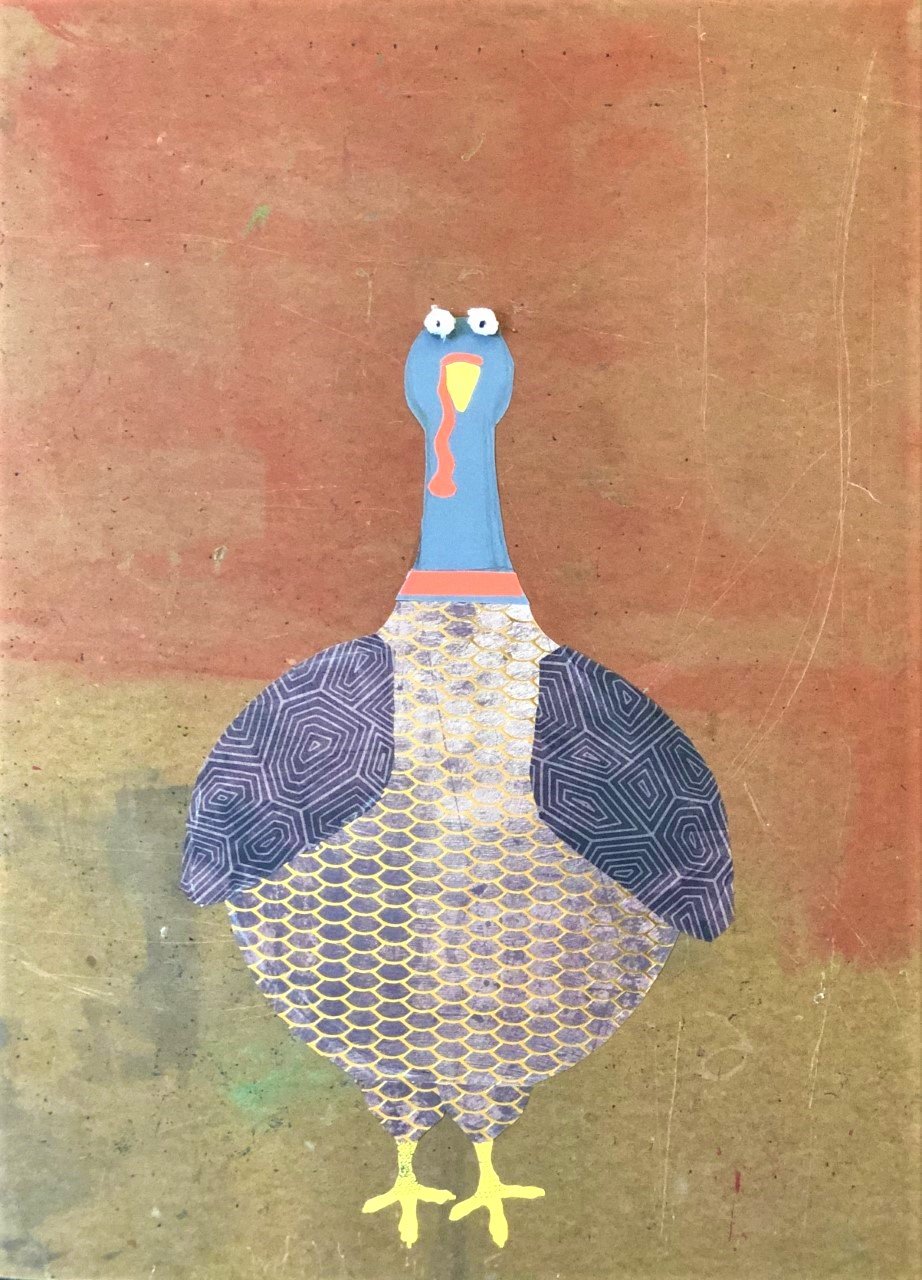 Last Thursday our Lower and Upper Elementary crews celebrated Thanksgiving with a feast and a party! Some children signed up to bring side dishes and pies...
Last Thursday our Lower and Upper Elementary crews celebrated Thanksgiving with a feast and a party! Some children signed up to bring side dishes and pies... 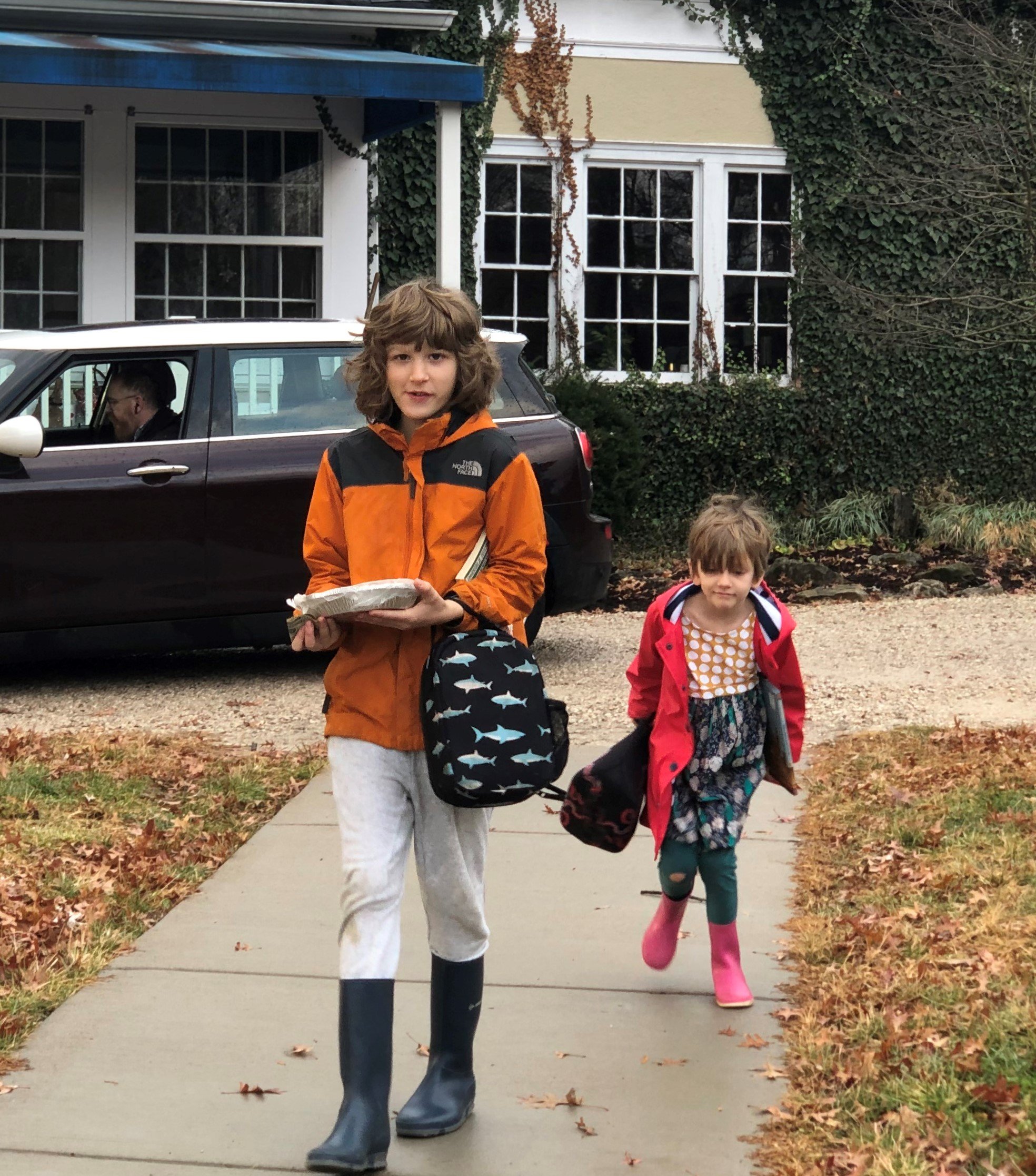
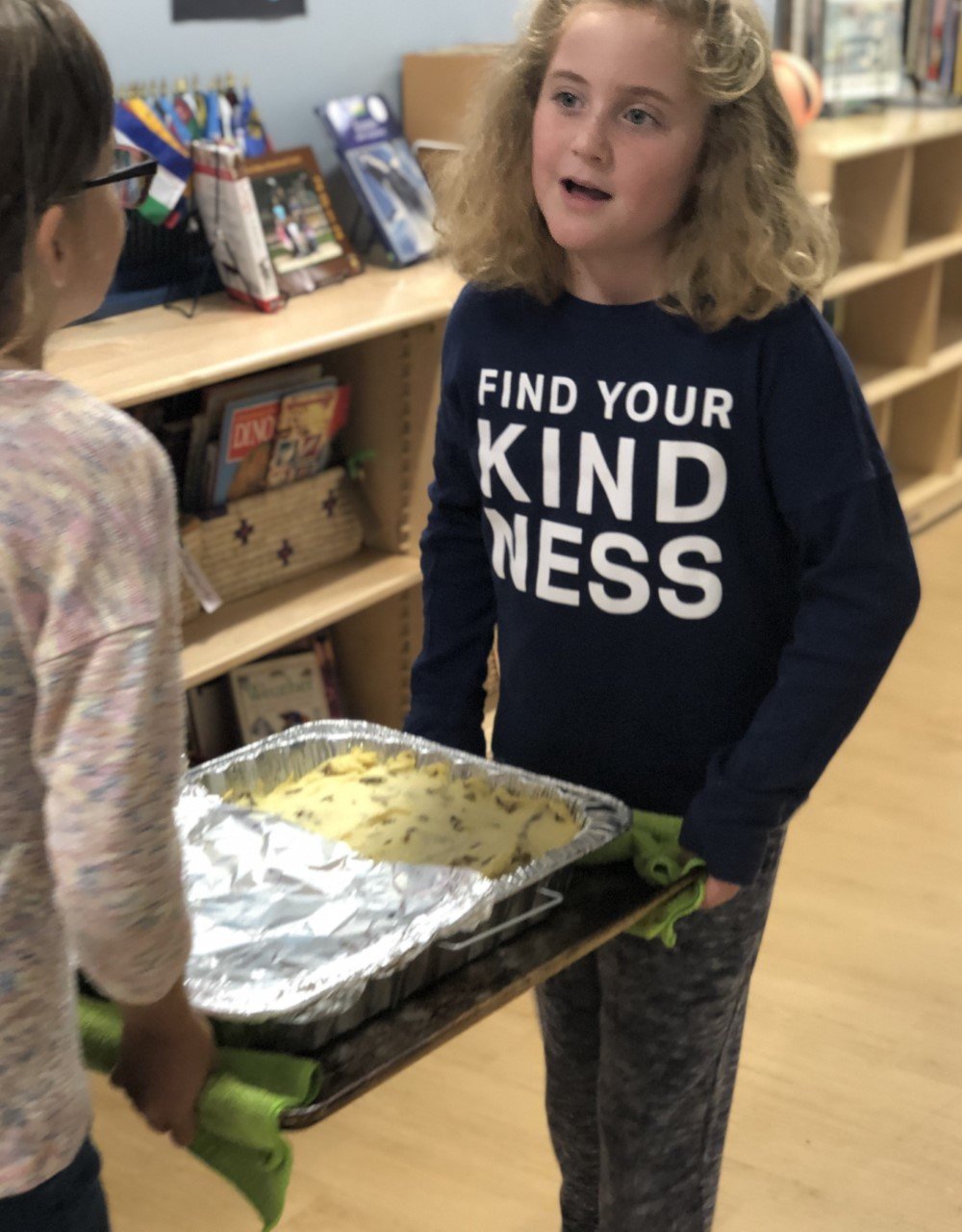 while others worked in the kitchen with Mr. Justin to prepare the main attractions.
while others worked in the kitchen with Mr. Justin to prepare the main attractions. 
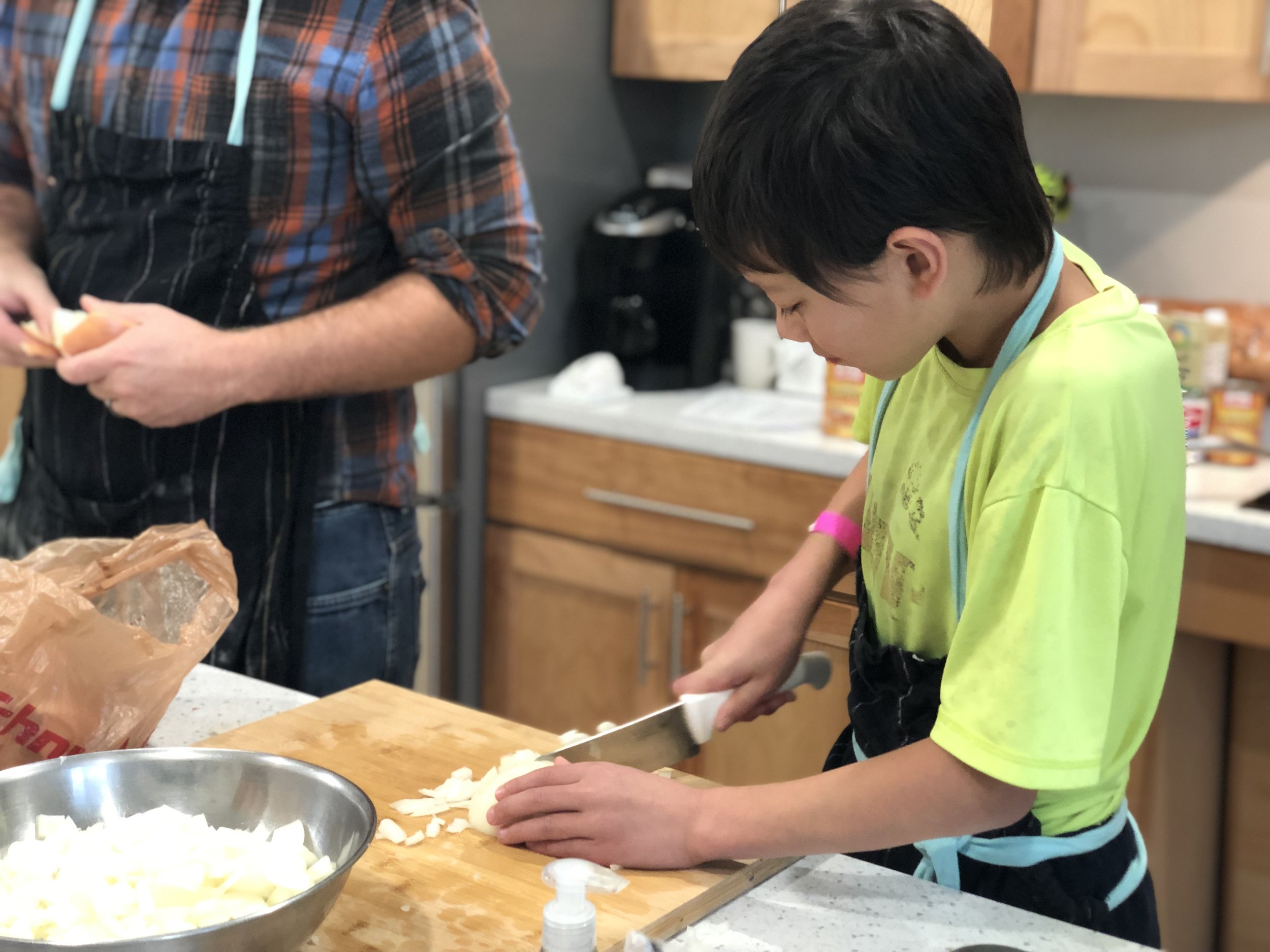

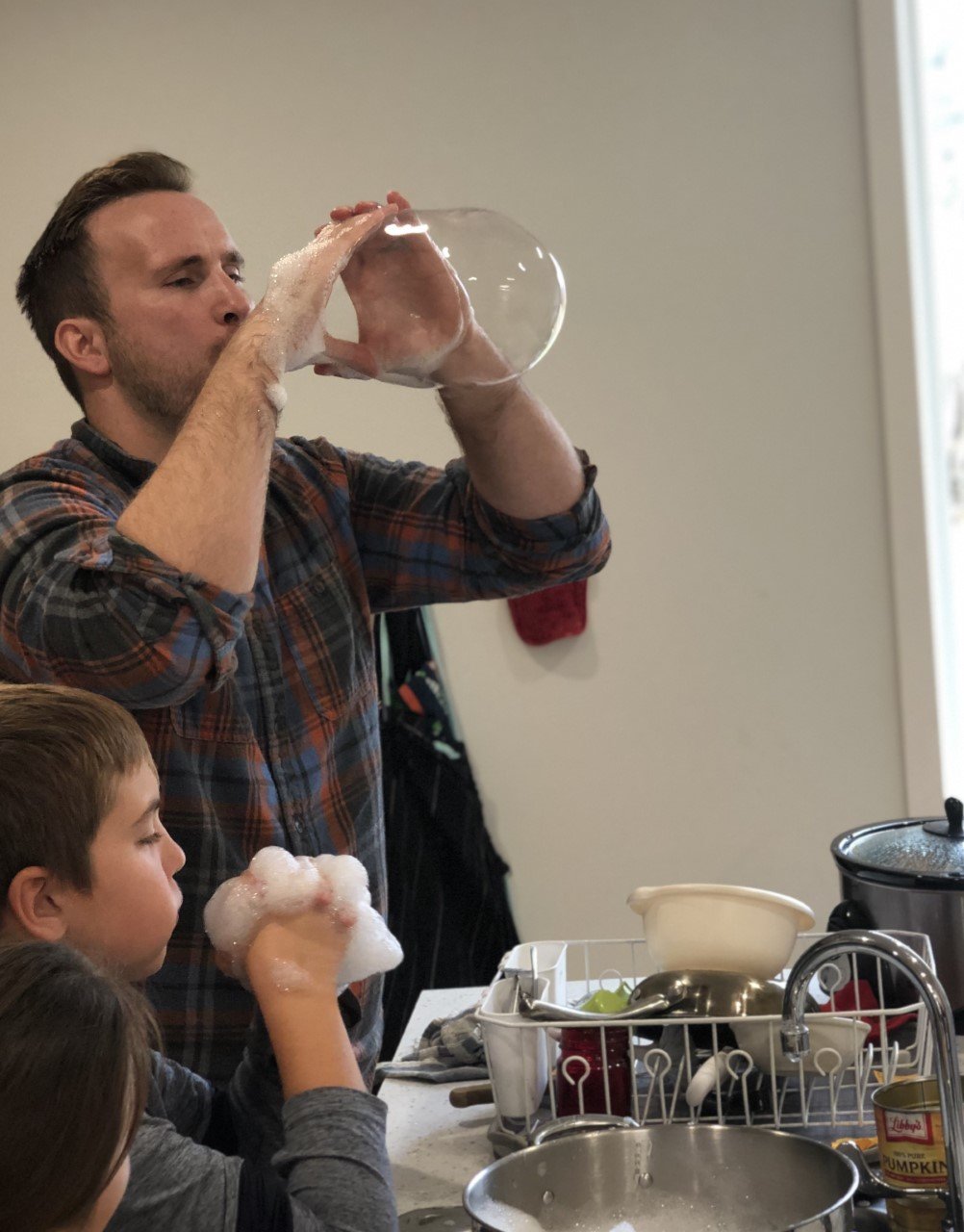 In the Great Room, the decoration committee was hard at work to make things beautiful and festive...
In the Great Room, the decoration committee was hard at work to make things beautiful and festive... 
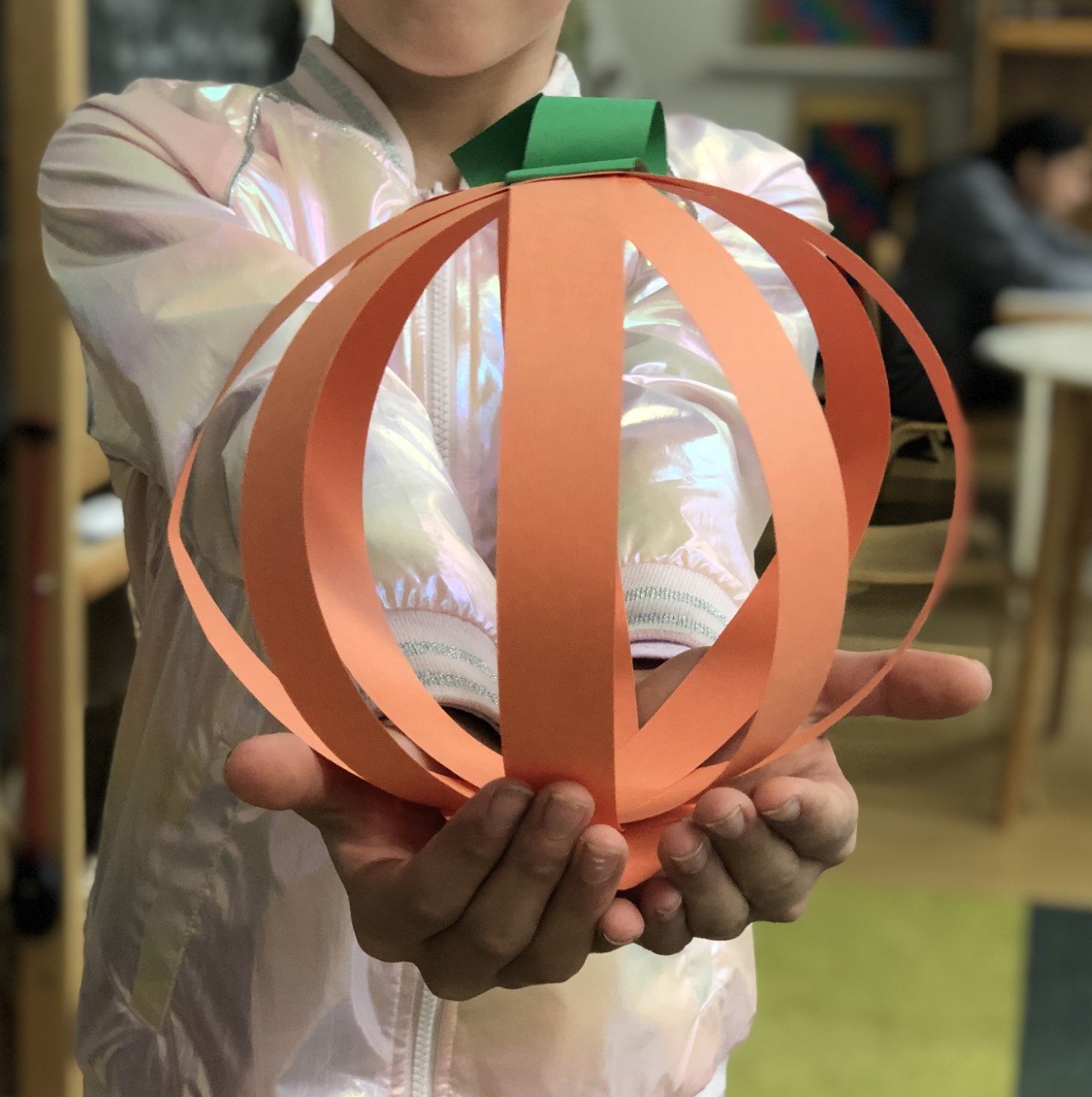 while others waited patiently for the party to begin.
while others waited patiently for the party to begin. 
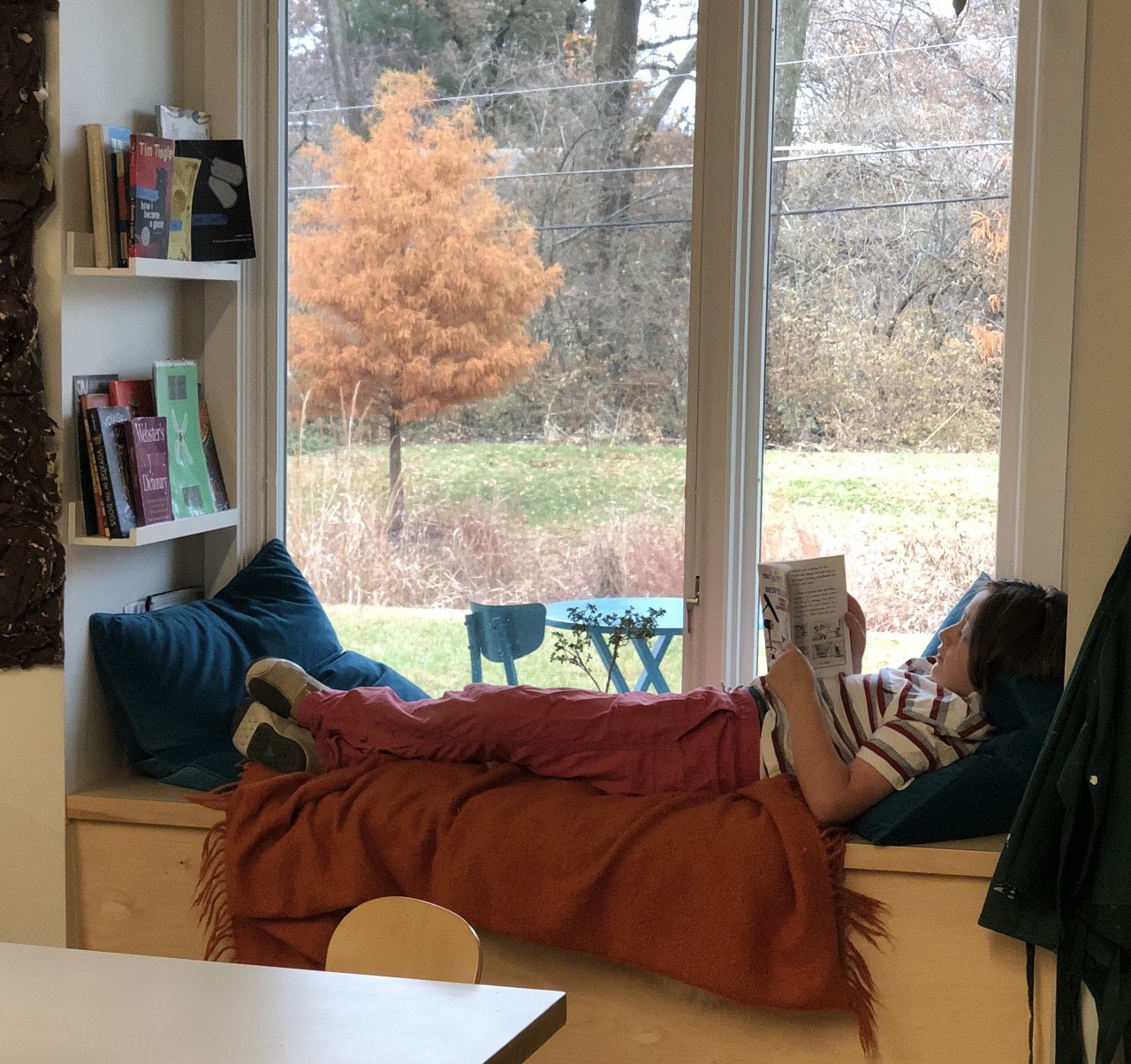 The chefs worked all morning...
The chefs worked all morning... 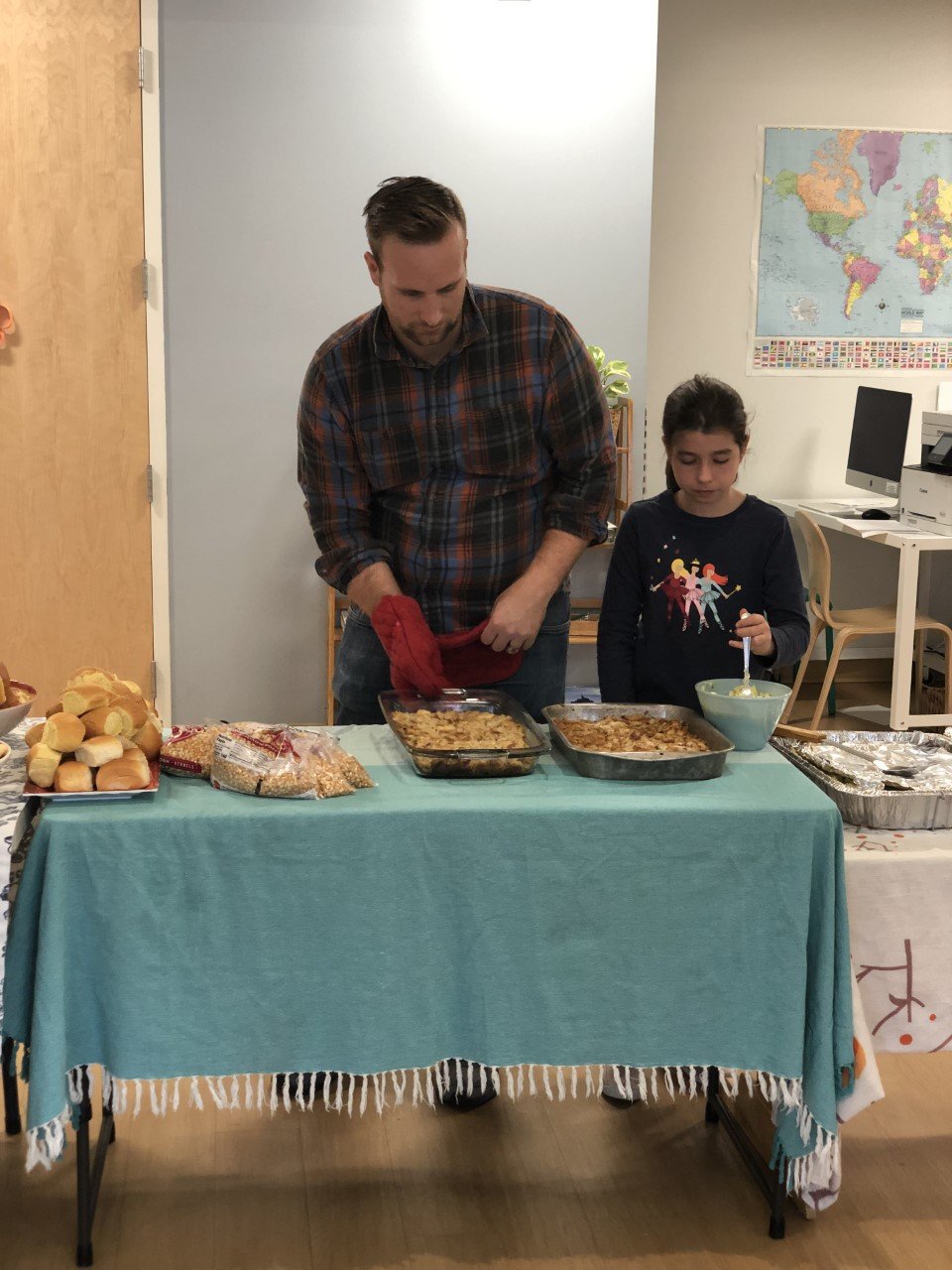

 until it was finally time for the party! The recitation committee wrote and presented Thanksgiving poems, and the bands played original Thanksgiving songs.
until it was finally time for the party! The recitation committee wrote and presented Thanksgiving poems, and the bands played original Thanksgiving songs. 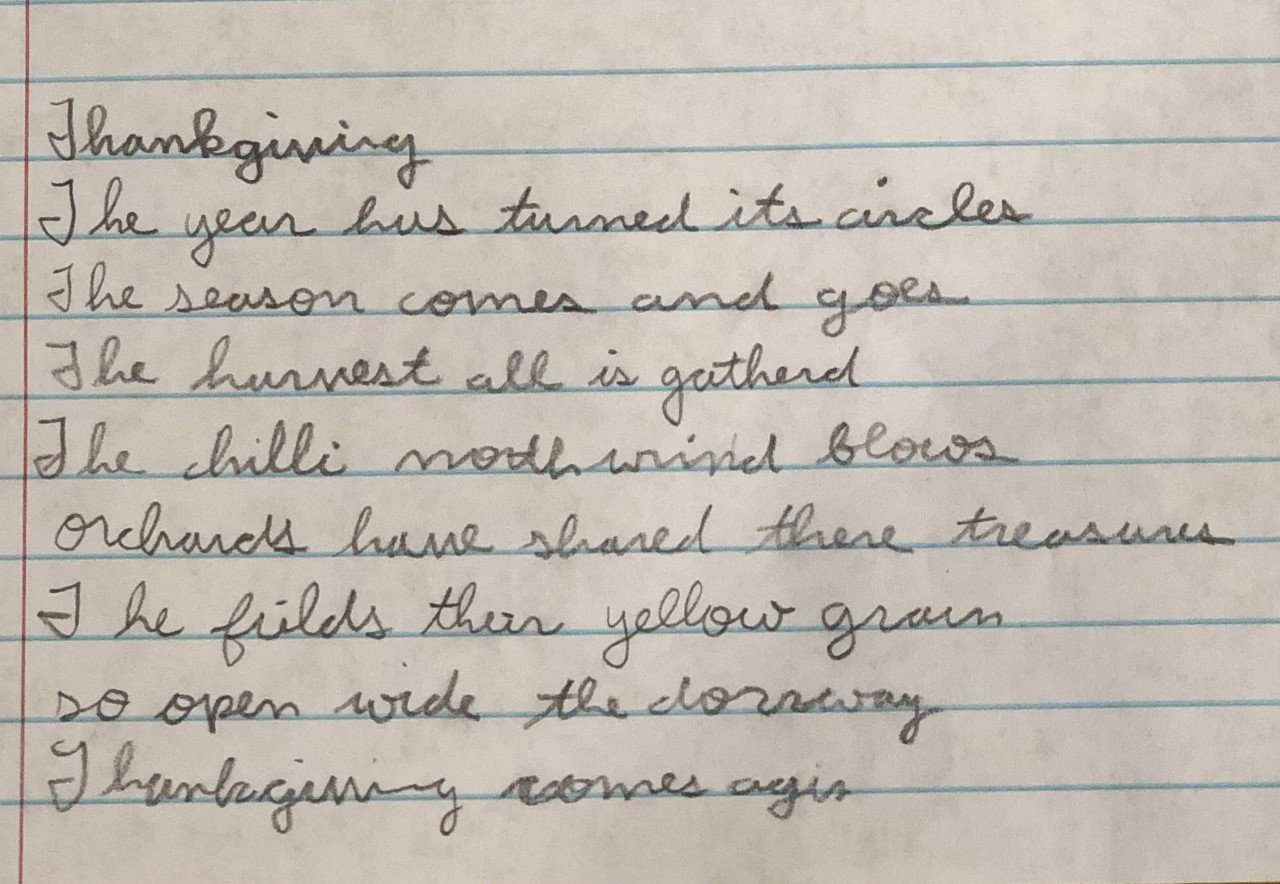
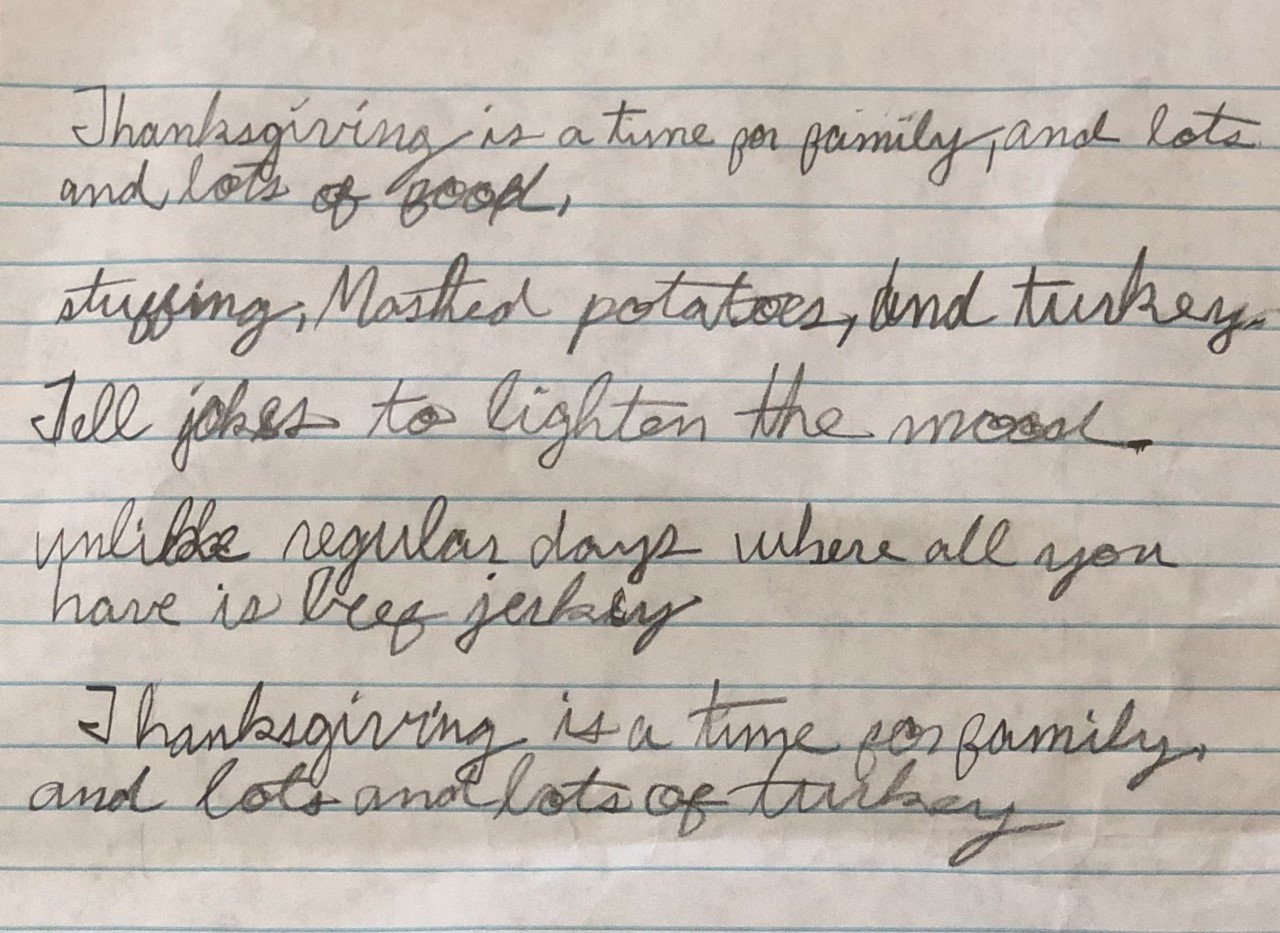
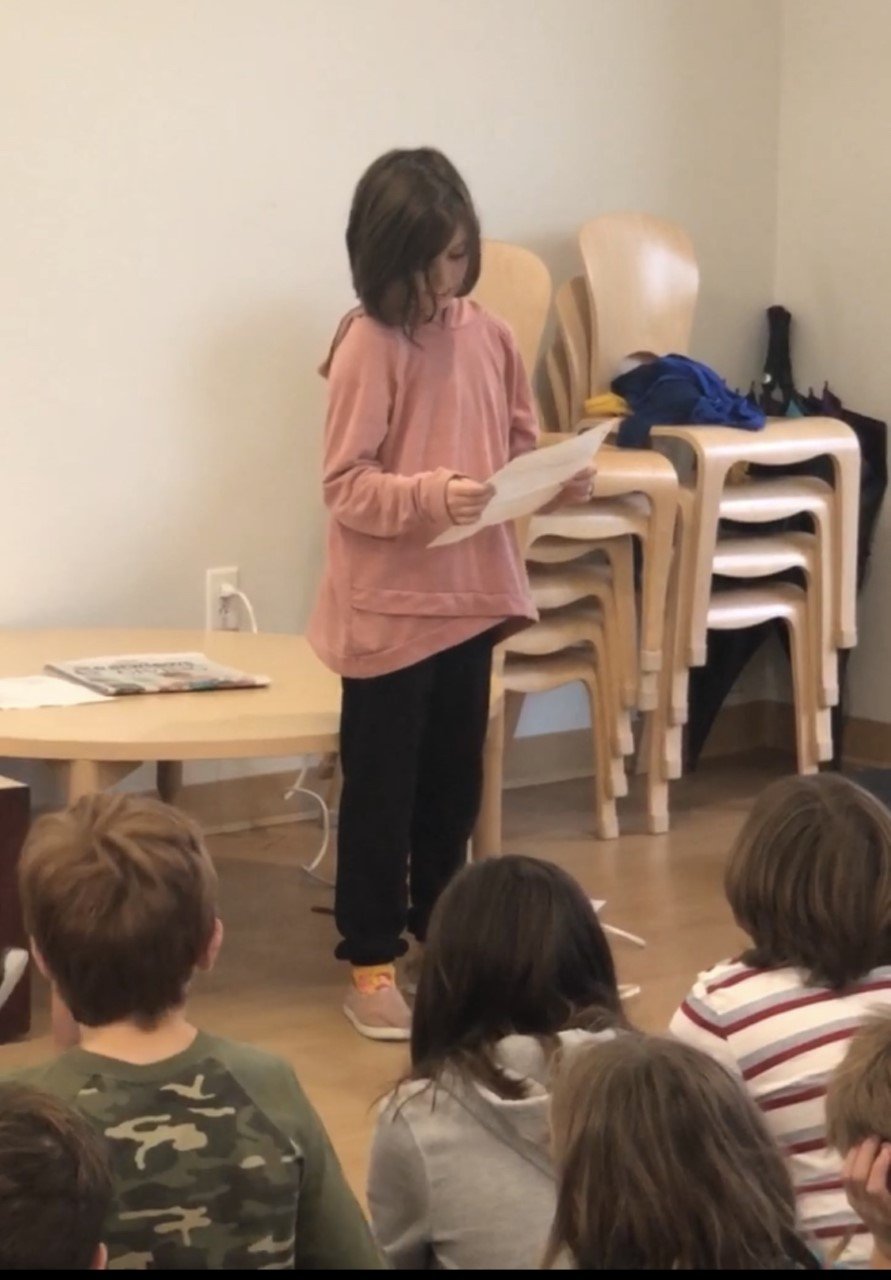
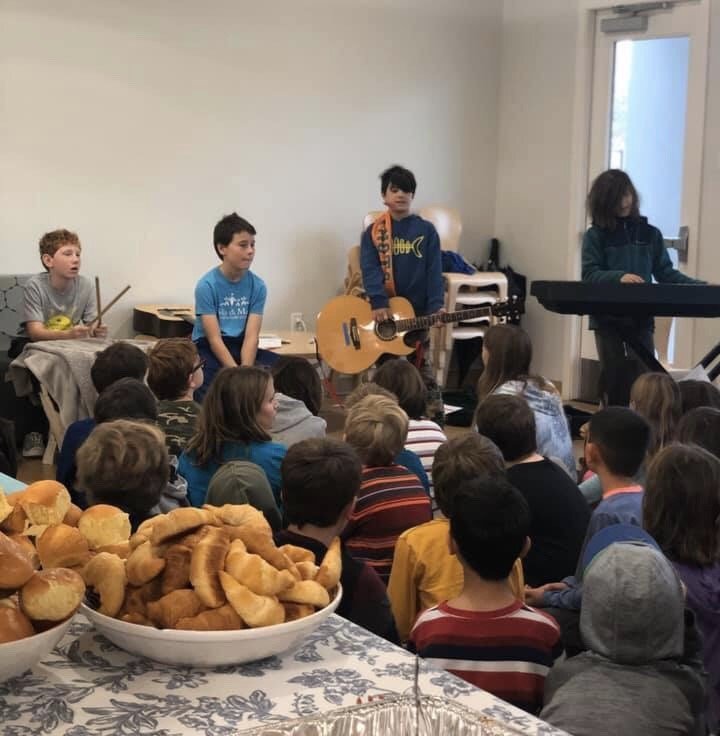 And then... the feast!
And then... the feast!
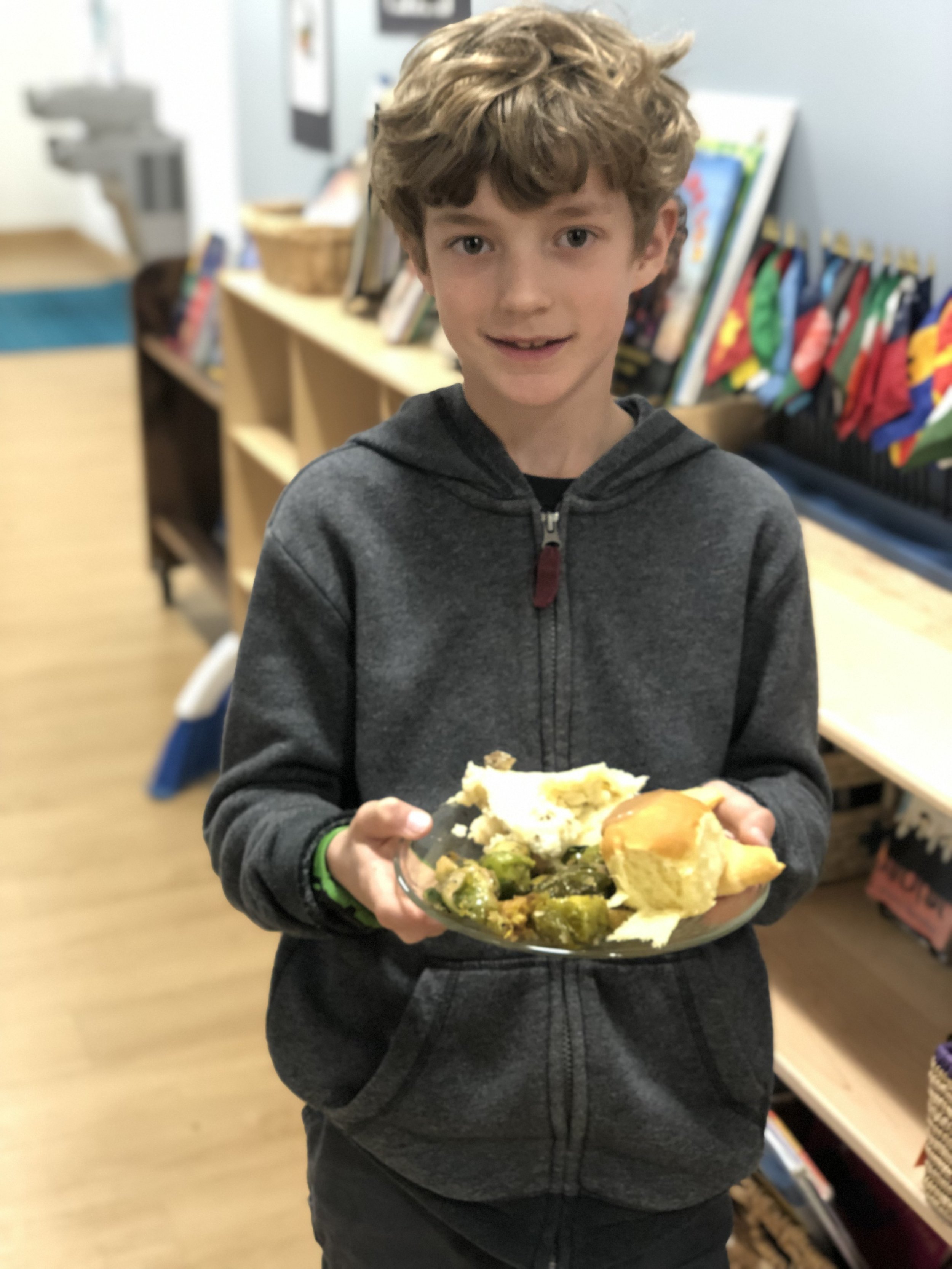
 It was a wonderful day of great food and celebration for the VdM Elementary, and a great way to kick off the holiday season. From our family to yours, Happy Thanksgiving!
It was a wonderful day of great food and celebration for the VdM Elementary, and a great way to kick off the holiday season. From our family to yours, Happy Thanksgiving!

 Chickadee, written and illustrated by Louise Erdrich, is the fourth book in the Birchbark House series, which follows the stories of an Ojibwe family through a hundred years in the Northern Midwestern United States and Canada. In this book, we meet Chickadee and Makoons, eight-year-old identical twins whose lives are full of fun and happiness until Chickadee is stolen from his home and family to work as a servant for his white kidnappers. Chickadee escapes and he and his family face dangerous journeys across Minnesota to find each other. Chickadee is guided by the spirit of the bird that is his namesake—small and mischievous, powerful and brave. This is a beautiful story, full of adventure, sorrow, courage, tradition, joy and humor.
Chickadee, written and illustrated by Louise Erdrich, is the fourth book in the Birchbark House series, which follows the stories of an Ojibwe family through a hundred years in the Northern Midwestern United States and Canada. In this book, we meet Chickadee and Makoons, eight-year-old identical twins whose lives are full of fun and happiness until Chickadee is stolen from his home and family to work as a servant for his white kidnappers. Chickadee escapes and he and his family face dangerous journeys across Minnesota to find each other. Chickadee is guided by the spirit of the bird that is his namesake—small and mischievous, powerful and brave. This is a beautiful story, full of adventure, sorrow, courage, tradition, joy and humor.  Code Talker: A Novel About the Navajo Marines of World War Two by Joseph Bruchac. This is the story of 16-year-old Ned Begay, a fictional character who represents the Navajo men and boys who worked for the U.S. military in World War II, during a time when Navajo children were routinely taken from their homes and sent to boarding schools where they were made to unlearn their language and culture. Many Navajo boys were secretly recruited from these schools precisely for the language they were being trained to forget. They used their native language to communicate on behalf of the U.S. military during the Pacific Theater. Navajo, indecipherable by the Japanese, was the "code" that helped saved many lives in the war. How I Bec
Code Talker: A Novel About the Navajo Marines of World War Two by Joseph Bruchac. This is the story of 16-year-old Ned Begay, a fictional character who represents the Navajo men and boys who worked for the U.S. military in World War II, during a time when Navajo children were routinely taken from their homes and sent to boarding schools where they were made to unlearn their language and culture. Many Navajo boys were secretly recruited from these schools precisely for the language they were being trained to forget. They used their native language to communicate on behalf of the U.S. military during the Pacific Theater. Navajo, indecipherable by the Japanese, was the "code" that helped saved many lives in the war. How I Bec ame a Ghost by Tim Tingle is the story of ten-year-old Isaac, a Choctow boy whose family is forced by the U.S. military to leave their home in Mississippi on the Trail of Tears. Isaac, like so many others, dies on the harrowing journey to find a new home. The story is told from Isaac's point of view, after his death. As a ghost, Isaac finds community among other ghosts and living elders who are able to communicate with him. With their help—and the help of Joseph, the panther boy and Jumper, a Choctow-speaking dog—Isaac works to rescue Naomi, a Choctow girl who has been taken prisoner by white soldiers. How I Became a Ghost is inspiring, rich with tradition and full of suspense.
ame a Ghost by Tim Tingle is the story of ten-year-old Isaac, a Choctow boy whose family is forced by the U.S. military to leave their home in Mississippi on the Trail of Tears. Isaac, like so many others, dies on the harrowing journey to find a new home. The story is told from Isaac's point of view, after his death. As a ghost, Isaac finds community among other ghosts and living elders who are able to communicate with him. With their help—and the help of Joseph, the panther boy and Jumper, a Choctow-speaking dog—Isaac works to rescue Naomi, a Choctow girl who has been taken prisoner by white soldiers. How I Became a Ghost is inspiring, rich with tradition and full of suspense.  In the Footsteps of Crazy Horse by Joseph Marshall, III tells the story of an eleven-year-old Lakota boy, Jimmy McClean and his maternal grandfather, Nyles High Eagle. Jimmy is bullied on his reservation because he inherited his last name, as well as his light skin and blue eyes, from his white paternal grandfather. To help Jimmy find confidence, Nyles takes him on an adventure, following the footsteps of the great Lakota leader, Crazy Horse, who defended Lakota territories against the U.S. federal government. As they travel through South Dakota, Nyles tells Jimmy (and the reader) stories about the life of Crazy Horse and inspires Jimmy to find pride in himself and his true Lakota heritage. A Str
In the Footsteps of Crazy Horse by Joseph Marshall, III tells the story of an eleven-year-old Lakota boy, Jimmy McClean and his maternal grandfather, Nyles High Eagle. Jimmy is bullied on his reservation because he inherited his last name, as well as his light skin and blue eyes, from his white paternal grandfather. To help Jimmy find confidence, Nyles takes him on an adventure, following the footsteps of the great Lakota leader, Crazy Horse, who defended Lakota territories against the U.S. federal government. As they travel through South Dakota, Nyles tells Jimmy (and the reader) stories about the life of Crazy Horse and inspires Jimmy to find pride in himself and his true Lakota heritage. A Str anger at Home: A True Story, written by Christy Jordan-Fenton and Margaret Pokiak-Fenton and illustrated by Liz Amini-Holmes. This is the sequel to Pokiak-Fenton's first memoir, Fatty Legs. This book tells the true, heartbreaking story of ten-year-old Olemaun (Margaret) Pokiak's return to her Inuit family in the arctic after two years of living in a residential school in Canada, where she was forced to take a new name, practice a different religion and lose her native language. When she returns home, Margaret's family does not recognize her and Margaret discovers that she no longer knows how to live with them. She struggles to relearn everything and to find her sense of self and belonging. Recommended children's books by Native American authors:First Nations Development Institute's
anger at Home: A True Story, written by Christy Jordan-Fenton and Margaret Pokiak-Fenton and illustrated by Liz Amini-Holmes. This is the sequel to Pokiak-Fenton's first memoir, Fatty Legs. This book tells the true, heartbreaking story of ten-year-old Olemaun (Margaret) Pokiak's return to her Inuit family in the arctic after two years of living in a residential school in Canada, where she was forced to take a new name, practice a different religion and lose her native language. When she returns home, Margaret's family does not recognize her and Margaret discovers that she no longer knows how to live with them. She struggles to relearn everything and to find her sense of self and belonging. Recommended children's books by Native American authors:First Nations Development Institute's 
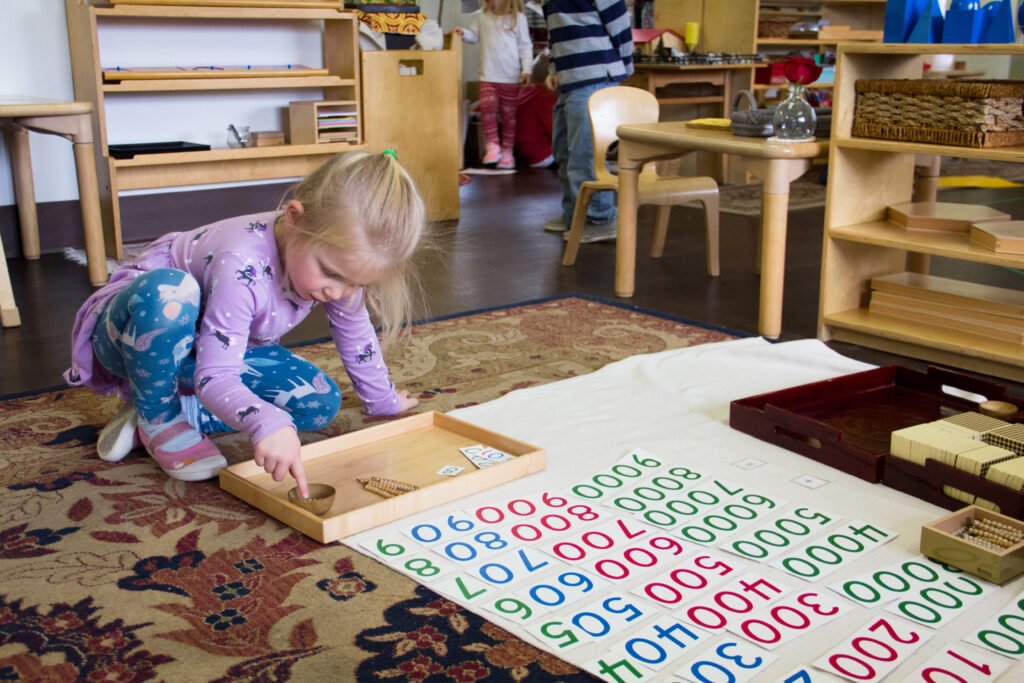
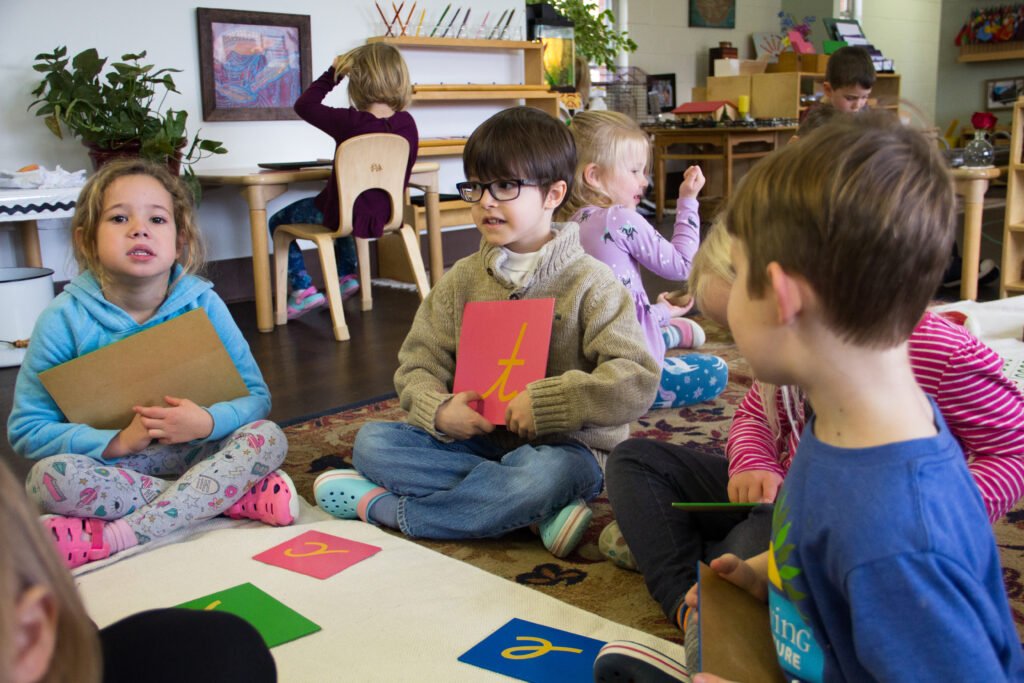

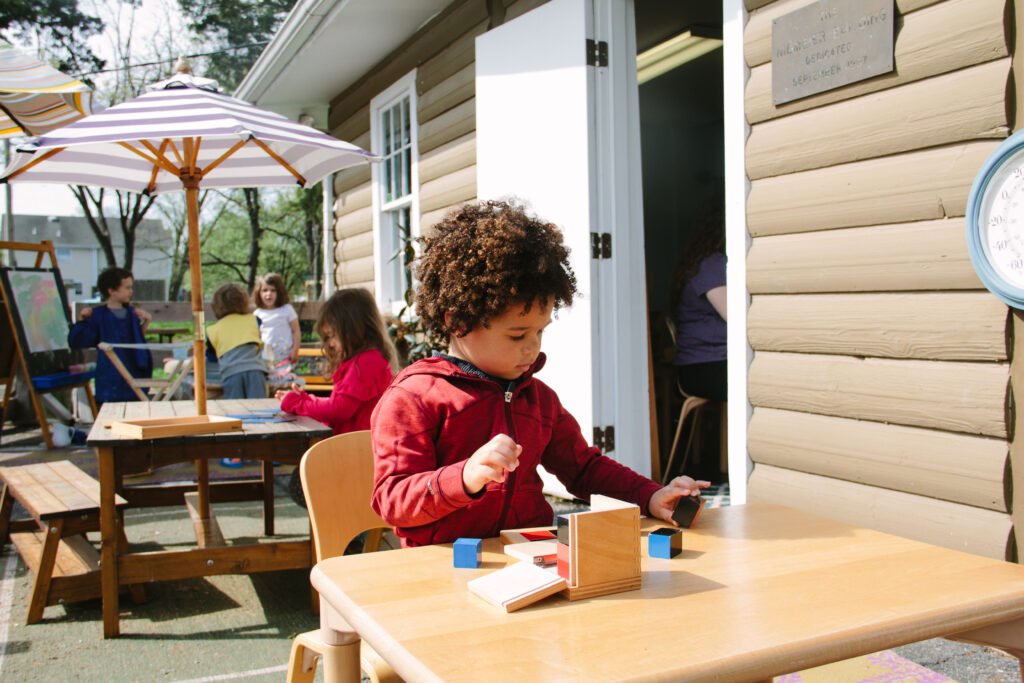
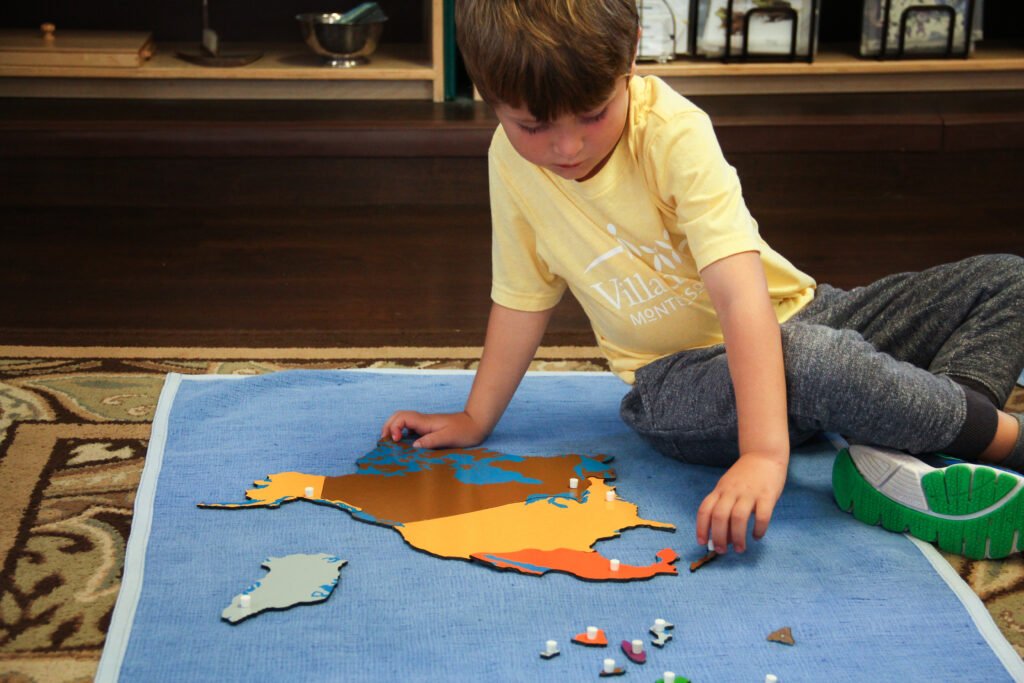
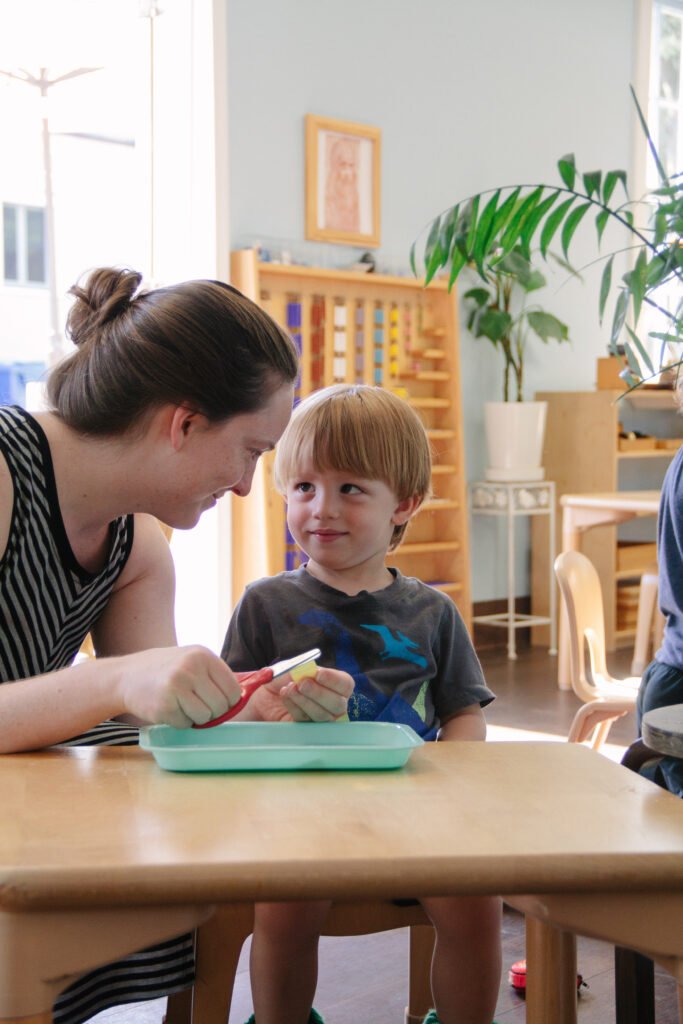
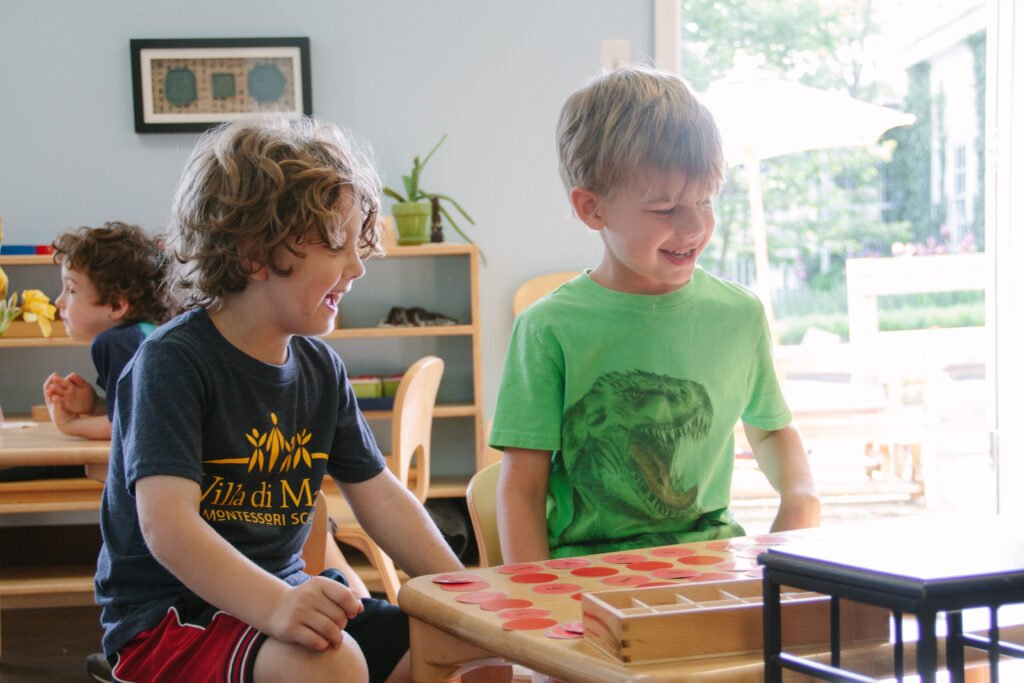



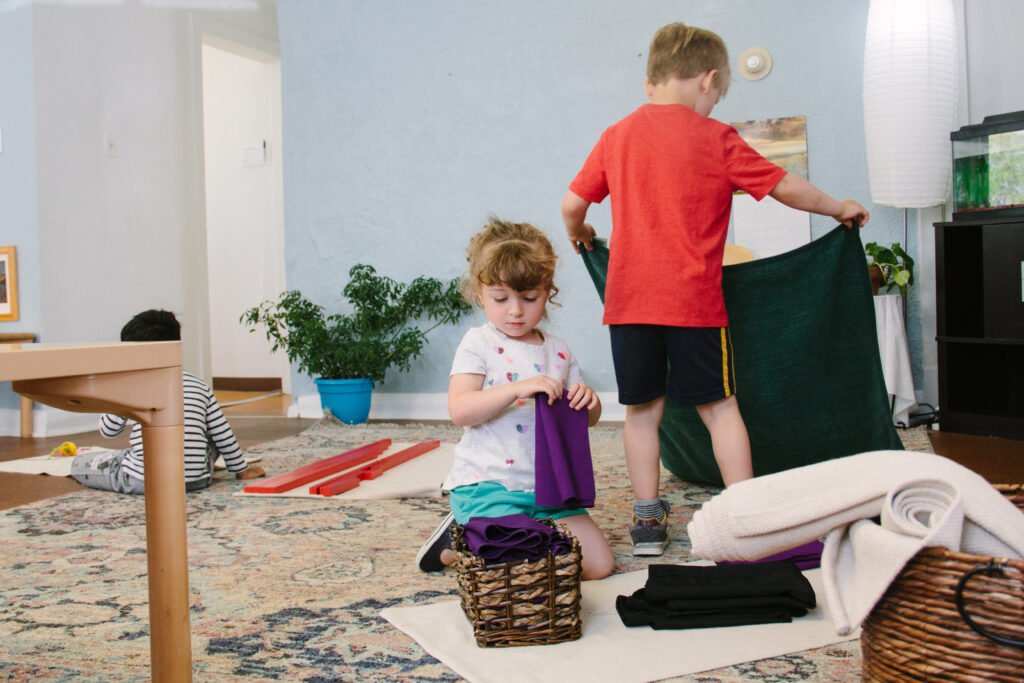




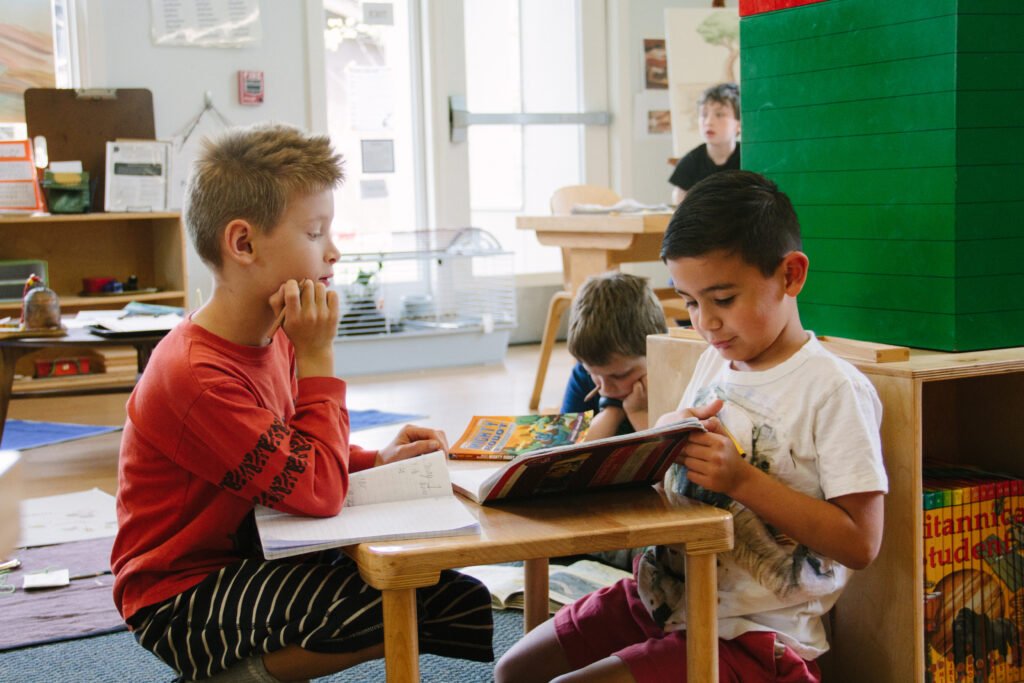

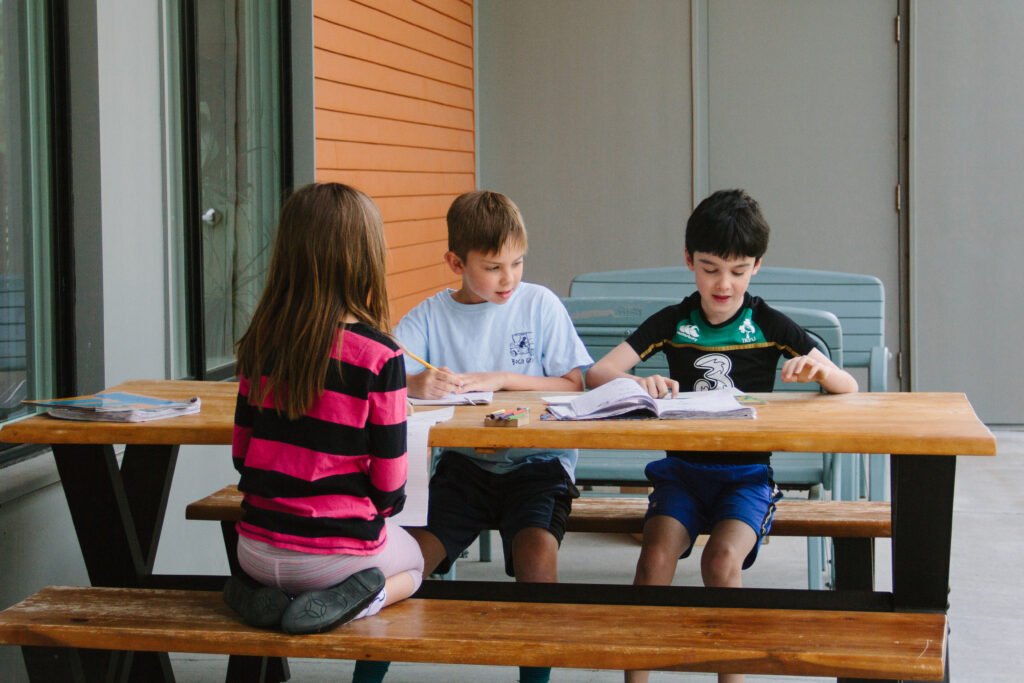
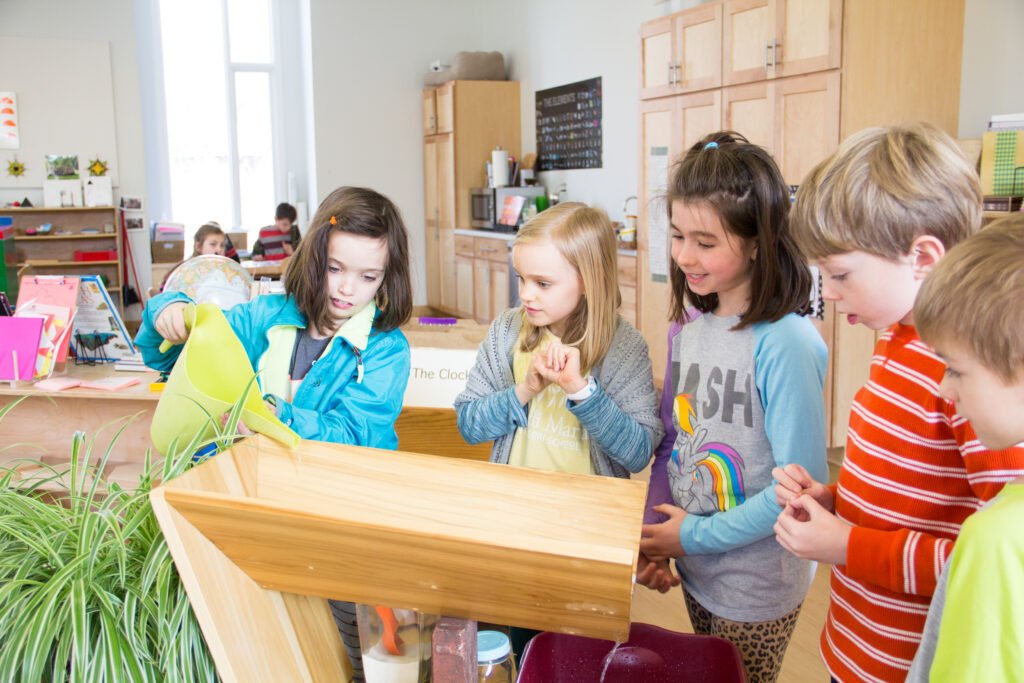


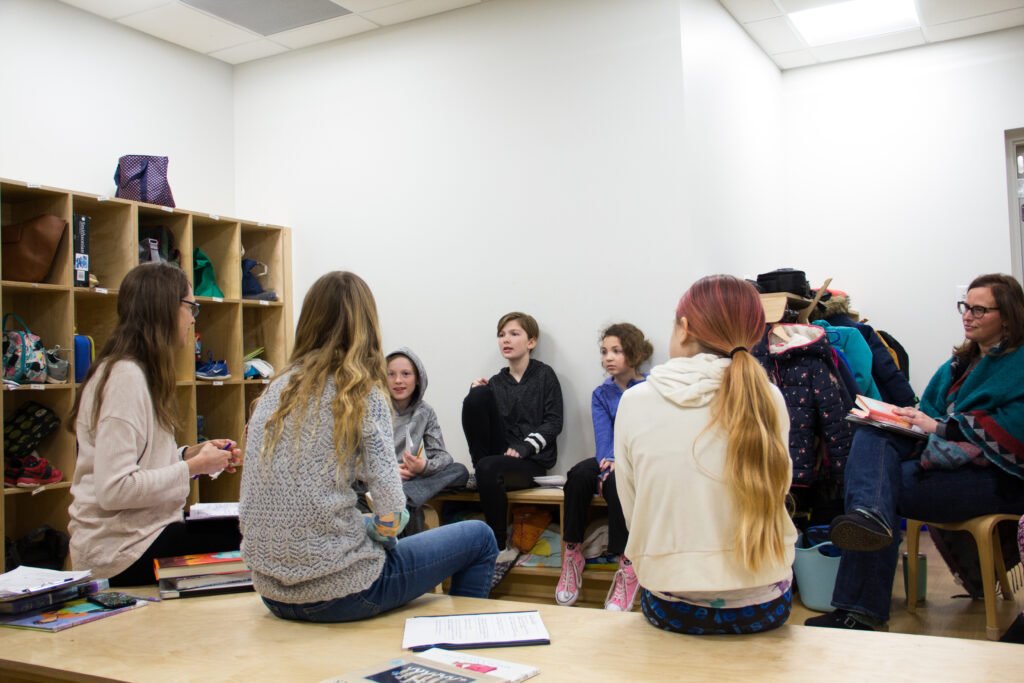
 Happy summer and here's to 2019-2020!
Happy summer and here's to 2019-2020!
 In Montessori we talk a lot about individuality. Children working at their own pace, children being met where they are, children learning through topics that interest them... But, collaboration is vital to any community's success and a crucial life skill for individuals.
In Montessori we talk a lot about individuality. Children working at their own pace, children being met where they are, children learning through topics that interest them... But, collaboration is vital to any community's success and a crucial life skill for individuals.
 Opportunities to practice teamwork - hand in hand with opportunities to practice negotiating the difficulties that can arise when working with others - are omnipresent in the Montessori environment. These experiences and the tools that children gain from them, prepare children for life beyond school.
Opportunities to practice teamwork - hand in hand with opportunities to practice negotiating the difficulties that can arise when working with others - are omnipresent in the Montessori environment. These experiences and the tools that children gain from them, prepare children for life beyond school.




 From carrying heavy objects to research to experiments, teamwork makes the dream work! We know this for our children, and we see it in our greater Villa di Maria community. Thank you for being part of our team!Photo credit to Jessie Braud and Melinda Smith.
From carrying heavy objects to research to experiments, teamwork makes the dream work! We know this for our children, and we see it in our greater Villa di Maria community. Thank you for being part of our team!Photo credit to Jessie Braud and Melinda Smith.
 This past weekend, however, parents had the opportunity to see the classroom in a whole new way. They explored the classroom without children, turning their focus on the materials themselves. The weekend provided a time lapse of all Villa di Maria offers, introducing parents to work of young children through the work of the Upper Elementary children.
This past weekend, however, parents had the opportunity to see the classroom in a whole new way. They explored the classroom without children, turning their focus on the materials themselves. The weekend provided a time lapse of all Villa di Maria offers, introducing parents to work of young children through the work of the Upper Elementary children.
 After silently walking through a classroom from each level (Parent Child, Children's House, Lower Elementary, Upper Elementary) and taking time to discuss as a group what they noticed in each of the classrooms, parents were invited to explore the environments more fully.Materials were laid out with instructions so that the parents could explore the work and follow the steps a child would follow doing the work. Other work was introduced through lessons. It's a real treat at any age to receive a lesson from a Guide!
After silently walking through a classroom from each level (Parent Child, Children's House, Lower Elementary, Upper Elementary) and taking time to discuss as a group what they noticed in each of the classrooms, parents were invited to explore the environments more fully.Materials were laid out with instructions so that the parents could explore the work and follow the steps a child would follow doing the work. Other work was introduced through lessons. It's a real treat at any age to receive a lesson from a Guide! While adults can't have the same experience that children have in the prepared environments, this is about as close as we can get to recreating our children's experience.
While adults can't have the same experience that children have in the prepared environments, this is about as close as we can get to recreating our children's experience.












 Parents left with a newfound appreciation for the work their children do at school, commenting that they would now go through their children's work folders with reverence.On the experience, one parent shared, "The objective is to experience the gift we are giving our children, and increasing our own understanding of the Montessori way. Seeing how the "lessons" have layers of concepts and teachings that take years to peel back. At the end, just when you think you "get it," like a great novel, you realize that all the activities are interconnected in a symphony of learning, spanning from when the children enter, to when they leave. Yep, you missed it the first time through. It's so subtle, you can't really explain it. How would you explain Mozart to someone who's never heard it?"This opportunity is made available once a year. If you missed it this time, look out for it next year; it's well worth your time!Thanks to Jade Venditte for sharing pictures, to the staff and supporters of Villa di Maria for making this happen and to the parents who took a chunk of their time to understand more fully what they are giving their children with the gift of Montessori.
Parents left with a newfound appreciation for the work their children do at school, commenting that they would now go through their children's work folders with reverence.On the experience, one parent shared, "The objective is to experience the gift we are giving our children, and increasing our own understanding of the Montessori way. Seeing how the "lessons" have layers of concepts and teachings that take years to peel back. At the end, just when you think you "get it," like a great novel, you realize that all the activities are interconnected in a symphony of learning, spanning from when the children enter, to when they leave. Yep, you missed it the first time through. It's so subtle, you can't really explain it. How would you explain Mozart to someone who's never heard it?"This opportunity is made available once a year. If you missed it this time, look out for it next year; it's well worth your time!Thanks to Jade Venditte for sharing pictures, to the staff and supporters of Villa di Maria for making this happen and to the parents who took a chunk of their time to understand more fully what they are giving their children with the gift of Montessori.

 While everyone made the most of the snow and cold weather, the warmer weather is beyond welcome!
While everyone made the most of the snow and cold weather, the warmer weather is beyond welcome! Extended Day is enjoying their treat of playing in the tree just outside the playground. This is a magical place... just beginning to move from the Children's House playground but not quite to the Elementary space.
Extended Day is enjoying their treat of playing in the tree just outside the playground. This is a magical place... just beginning to move from the Children's House playground but not quite to the Elementary space.

 Forts continue to be built and rebuilt.
Forts continue to be built and rebuilt. Appropriately, this fort is building a patio! Who doesn't want to spend a Spring day on the patio?
Appropriately, this fort is building a patio! Who doesn't want to spend a Spring day on the patio? Stone gathering for the patio.
Stone gathering for the patio. There are pretty high standards for the sticks used in some of the forts!
There are pretty high standards for the sticks used in some of the forts! Epic games of Ultimate Frisbee are underway.
Epic games of Ultimate Frisbee are underway.

 And lots and lots of tree climbing!
And lots and lots of tree climbing! Spring will continue to be enjoyed in all of its states so make sure your child has a change of clothes (Elementary as well as Children House - these children play hard in the mud!), boots and raincoats when appropriate. Happy Spring!
Spring will continue to be enjoyed in all of its states so make sure your child has a change of clothes (Elementary as well as Children House - these children play hard in the mud!), boots and raincoats when appropriate. Happy Spring!





 The younger children were then invited to a sensorial experience of the drums at hand!
The younger children were then invited to a sensorial experience of the drums at hand!
 The bus trip is admittedly always a highlight of these adventures.
The bus trip is admittedly always a highlight of these adventures. The performance itself received rave reviews from children and adults alike!
The performance itself received rave reviews from children and adults alike!

 Children and adults from each class were invited to join the group on stage to learn a dance.
Children and adults from each class were invited to join the group on stage to learn a dance.

 What a morning for our Extended Day children!
What a morning for our Extended Day children! While Extended Day children boarded buses back to school, the Elementary children continued their adventure with a trip to Ikea for lunch! This was a real Practical Life work - managing money, choosing items, navigating the cafeteria and of course eating with friends!
While Extended Day children boarded buses back to school, the Elementary children continued their adventure with a trip to Ikea for lunch! This was a real Practical Life work - managing money, choosing items, navigating the cafeteria and of course eating with friends!

 Melinda Smith shared the joy of the day with us through her photographs. Thank you Melinda!
Melinda Smith shared the joy of the day with us through her photographs. Thank you Melinda!






 As usual, Melinda Smith brings light to the darkness. Thank you for the photographs, Melinda.
As usual, Melinda Smith brings light to the darkness. Thank you for the photographs, Melinda.
 Assessments are only helpful if they give information which is valid and accurate. Surely many of us can relate to the experience of doing well on a test but not truly understanding the information tested. So, unlike traditional models, assessment in Montessori classrooms provides real feedback to the guide - and the child - about their understanding.The child is frequently assessed by their guide through direct interaction and observation. This one-on-one consideration allows the guide concrete understanding of where a child is, what they understand and where any gaps in knowledge might be.
Assessments are only helpful if they give information which is valid and accurate. Surely many of us can relate to the experience of doing well on a test but not truly understanding the information tested. So, unlike traditional models, assessment in Montessori classrooms provides real feedback to the guide - and the child - about their understanding.The child is frequently assessed by their guide through direct interaction and observation. This one-on-one consideration allows the guide concrete understanding of where a child is, what they understand and where any gaps in knowledge might be. Moreover, the children are given the skills to self-assess - to determine for themselves where they need more practice, where they went wrong, what they need to do to succeed. This work is not done in a vacuum; the guide works on the skill of self-assessment with the child. In the Elementary classroom this work can concretely be seen during weekly conferences although in reality the work is done every day. This is true not just of academic feats but also of social and emotional endeavors.
Moreover, the children are given the skills to self-assess - to determine for themselves where they need more practice, where they went wrong, what they need to do to succeed. This work is not done in a vacuum; the guide works on the skill of self-assessment with the child. In the Elementary classroom this work can concretely be seen during weekly conferences although in reality the work is done every day. This is true not just of academic feats but also of social and emotional endeavors. Testing in the more traditional sense is, however, a reality of our world. And as test-taking is a skill in and of itself, it is something we want to give the children some experience with. And so, at the beginning of March our 3rd through 6th year students will embark on a week of standardized testing after spending time at the end February prepping for the experience. For those with 3rd years, please know that this is a rite of passage that is generally greeted with excitement and eager anticipation!As this type of test is divergent from the experiences most Montessori children are familiar with, the message that we send our children about it is important and formative.To that end, we ask that you encourage your children to do their best without unnecessarily weighting the outcomes. From our perspective, this test gives them practice and exposure to the types of standardized tests which they may be taking in the future. It does not necessarily mean one thing or another about them academically. It has gravity and importance, but it does not (and cannot) reflect the fullness of their intellect or ability.
Testing in the more traditional sense is, however, a reality of our world. And as test-taking is a skill in and of itself, it is something we want to give the children some experience with. And so, at the beginning of March our 3rd through 6th year students will embark on a week of standardized testing after spending time at the end February prepping for the experience. For those with 3rd years, please know that this is a rite of passage that is generally greeted with excitement and eager anticipation!As this type of test is divergent from the experiences most Montessori children are familiar with, the message that we send our children about it is important and formative.To that end, we ask that you encourage your children to do their best without unnecessarily weighting the outcomes. From our perspective, this test gives them practice and exposure to the types of standardized tests which they may be taking in the future. It does not necessarily mean one thing or another about them academically. It has gravity and importance, but it does not (and cannot) reflect the fullness of their intellect or ability. Finally, when you receive your child's scores in the next few months, please refrain from sharing the results with them. This information is not helpful to your child, and it is difficult to share scores with children without giving them false import. Remember that while the scores may be helpful on a macro level (e.g., providing feedback to guides regarding class-wide strengths or weaknesses), the scores are taken out of any meaningful context for children. The children may try to contextualize their numbers by comparing them with classmates which is, as you can imagine, beneficial to no one. The social nature of Elementary children, coupled with the novelty of test scores, lead us to ask the community as a whole to refrain from sharing test results with children.
Finally, when you receive your child's scores in the next few months, please refrain from sharing the results with them. This information is not helpful to your child, and it is difficult to share scores with children without giving them false import. Remember that while the scores may be helpful on a macro level (e.g., providing feedback to guides regarding class-wide strengths or weaknesses), the scores are taken out of any meaningful context for children. The children may try to contextualize their numbers by comparing them with classmates which is, as you can imagine, beneficial to no one. The social nature of Elementary children, coupled with the novelty of test scores, lead us to ask the community as a whole to refrain from sharing test results with children. The important parenting work surrounding the test taking experience is to reassure your child that while you want them to do their best and try their hardest, you love them anyway, no matter what. Make sure that they know that the test does not prove or disprove anything about them as people. And finally, to support the entirety of the experience, make sure they are well-rested, well-fed and unscreened the morning of testing.My thanks to Anna Schwind for many, many of the above words along with lots of insights (as always!). The brilliance of the photography comes from Melinda Smith and Lauren Knight.
The important parenting work surrounding the test taking experience is to reassure your child that while you want them to do their best and try their hardest, you love them anyway, no matter what. Make sure that they know that the test does not prove or disprove anything about them as people. And finally, to support the entirety of the experience, make sure they are well-rested, well-fed and unscreened the morning of testing.My thanks to Anna Schwind for many, many of the above words along with lots of insights (as always!). The brilliance of the photography comes from Melinda Smith and Lauren Knight.









 My thanks to Lauren Knight and Samantha Clarke for the photos! And if you want to truly see the children in action, take a look at these.
My thanks to Lauren Knight and Samantha Clarke for the photos! And if you want to truly see the children in action, take a look at these. 
 Welcome to the second part of the series on creating community together. The previous
Welcome to the second part of the series on creating community together. The previous 

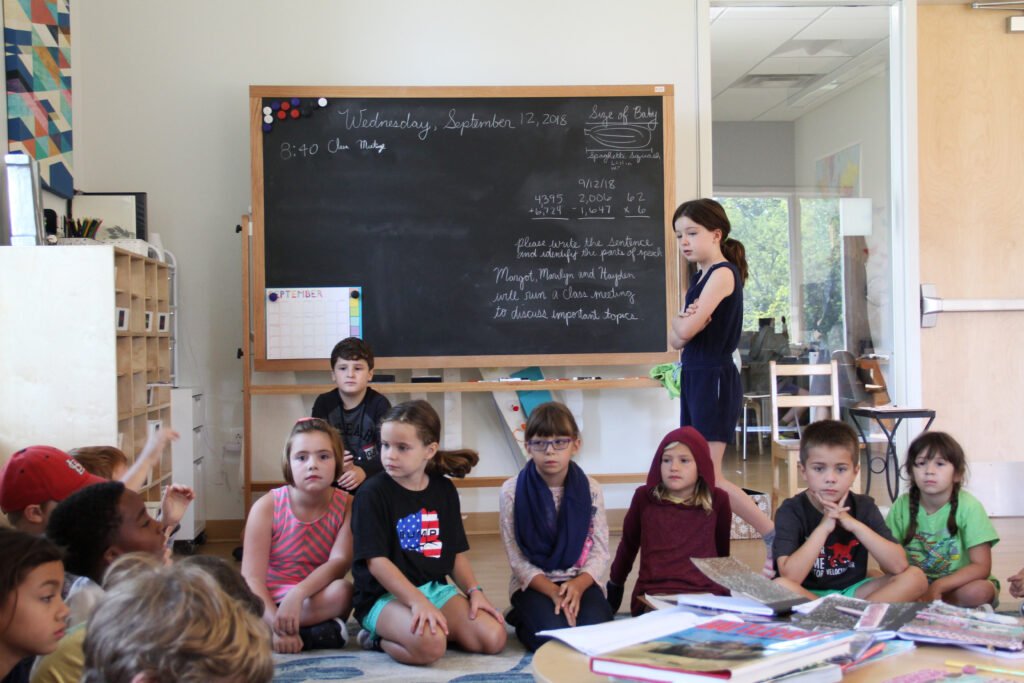
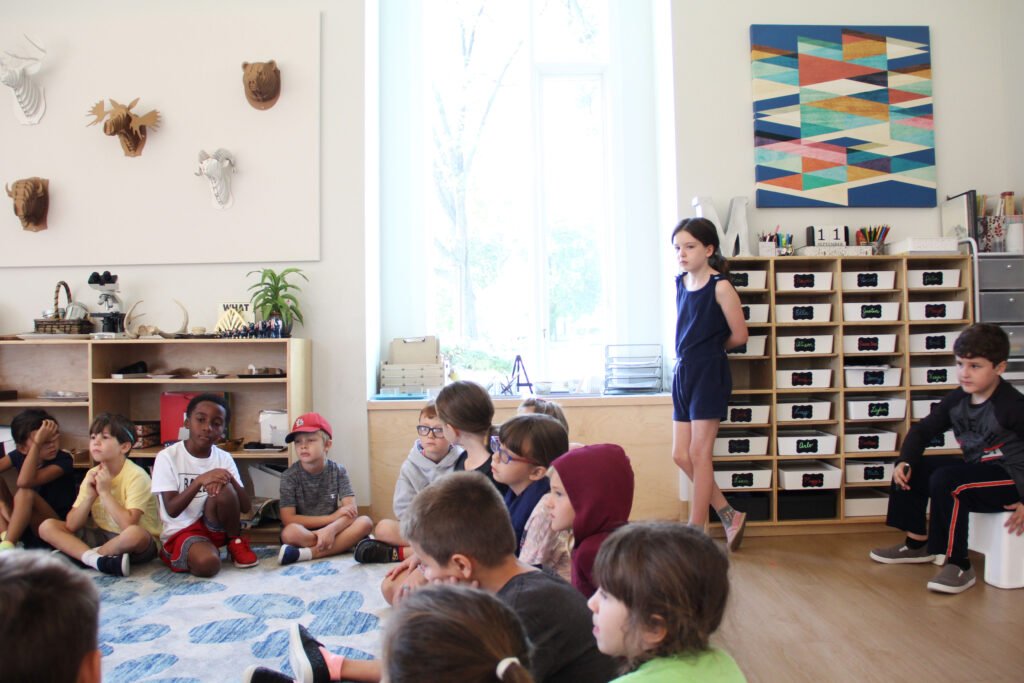
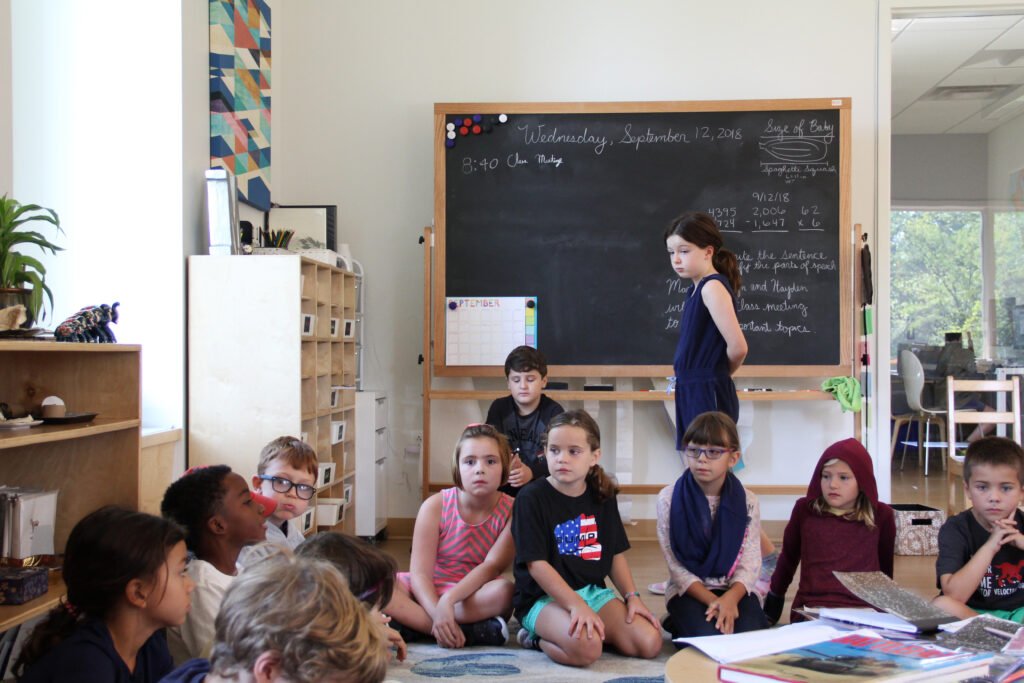 As expected, the first few meetings were a little bumpy, but as the students practiced working with the notebook items and the agenda and each of the different roles, they have become more skilled. Class meetings run smoothly now, and everyone knows what is expected.
As expected, the first few meetings were a little bumpy, but as the students practiced working with the notebook items and the agenda and each of the different roles, they have become more skilled. Class meetings run smoothly now, and everyone knows what is expected. After the meeting, the meeting notes and agenda are placed back into the binder, as a public record for the entire community. Should anyone forget what was decided, they can check.
After the meeting, the meeting notes and agenda are placed back into the binder, as a public record for the entire community. Should anyone forget what was decided, they can check.


 We are so lucky that our campus allows for sledding! Elementary children bring their sleds and take off with their friends on our (moderate!) hill.
We are so lucky that our campus allows for sledding! Elementary children bring their sleds and take off with their friends on our (moderate!) hill.
 A first year child's first experience of this Elementary privilege.
A first year child's first experience of this Elementary privilege. There are outdoor attire rules... I'm guessing the child's hood just flew off mid-sledding...
There are outdoor attire rules... I'm guessing the child's hood just flew off mid-sledding...



 Teamwork makes the dream work!
Teamwork makes the dream work! Recess is, of course, fun and provides lots of time for the gross motor movement and is so great for children. But, this movement is not limited to recess, and the snow and cold doesn't stop the children from getting their work done.
Recess is, of course, fun and provides lots of time for the gross motor movement and is so great for children. But, this movement is not limited to recess, and the snow and cold doesn't stop the children from getting their work done. "The child’s instinct confirms the fact that work is an inherent tendency in human nature; it is the characteristic instinct of the human race.” -Dr. MontessoriLet me once again proclaim the photographic brilliance of Melinda Smith! Thank you, Melinda!
"The child’s instinct confirms the fact that work is an inherent tendency in human nature; it is the characteristic instinct of the human race.” -Dr. MontessoriLet me once again proclaim the photographic brilliance of Melinda Smith! Thank you, Melinda!
 Tuesday and Wednesday of last week Villa di Maria was fortunate to host actor Erika Roberts from the Missouri History Museum's ACTivist program. She graced us with four sessions individually tailored toward our Extended Day through Upper Elementary children. She subtly shifted the depth of each presentation based on the age of the children.The session began with discussion and acceptance of Brave Space Rules, including refraining from assuming other people's thoughts or feelings and using "I statements" when speaking.
Tuesday and Wednesday of last week Villa di Maria was fortunate to host actor Erika Roberts from the Missouri History Museum's ACTivist program. She graced us with four sessions individually tailored toward our Extended Day through Upper Elementary children. She subtly shifted the depth of each presentation based on the age of the children.The session began with discussion and acceptance of Brave Space Rules, including refraining from assuming other people's thoughts or feelings and using "I statements" when speaking.
 Erika then moved the students on to a discussion around rights, particularly civil rights. The ACTivist program defines rights as "things that we are all allowed, or should all be allowed, to do. Rights are important for human beings to have to make sure we are happy and healthy and treated fairly." The children deftly identified some of their own rights and Erika adeptly clarified the distinction between rights and privileges. The next step was to define civil rights, this narrowing led civil rights being defined as "the rights that we have because we’re American citizens." Throughout the presentation she continually engaged the children in the conversation which both engaged them and let her know the depth of their understanding. She asked children to identify ideas and events they didn’t know and used this as an opportunity for further exploration.
Erika then moved the students on to a discussion around rights, particularly civil rights. The ACTivist program defines rights as "things that we are all allowed, or should all be allowed, to do. Rights are important for human beings to have to make sure we are happy and healthy and treated fairly." The children deftly identified some of their own rights and Erika adeptly clarified the distinction between rights and privileges. The next step was to define civil rights, this narrowing led civil rights being defined as "the rights that we have because we’re American citizens." Throughout the presentation she continually engaged the children in the conversation which both engaged them and let her know the depth of their understanding. She asked children to identify ideas and events they didn’t know and used this as an opportunity for further exploration. The conversation on civil rights naturally led to discussion of instances in which civil rights are not respected. The children brainstormed how it would feel to have one's right removed and what they might do in a situation where their rights were infringed upon. This introduced a thoughtful discussion of why people make the choices they make to defend their, or others', rights.
The conversation on civil rights naturally led to discussion of instances in which civil rights are not respected. The children brainstormed how it would feel to have one's right removed and what they might do in a situation where their rights were infringed upon. This introduced a thoughtful discussion of why people make the choices they make to defend their, or others', rights. In full Montessori fashion, Erika came with a timeline of African American civil rights from 1803-present, which included national and St. Louis-specific events. It was encouraging to witness the Upper Elementary children comment on Dred and Harriet Scott's case which they were all familiar with from past studies.
In full Montessori fashion, Erika came with a timeline of African American civil rights from 1803-present, which included national and St. Louis-specific events. It was encouraging to witness the Upper Elementary children comment on Dred and Harriet Scott's case which they were all familiar with from past studies.
 The session concluded in a performance piece which involved song and storytelling at its finest. The children were captivated by the actor's portrayal of the life of Lucy Delaney. Even the youngest children understood the essence of the story is of a young woman's quest for freedom. The Missouri History Museum's program is fantastic, and our children benefited from taking part in such thoughtfully planned and skillfully executed event. Classrooms are further building on this experience and encouraging children’s curiosity through books and research projects.
The session concluded in a performance piece which involved song and storytelling at its finest. The children were captivated by the actor's portrayal of the life of Lucy Delaney. Even the youngest children understood the essence of the story is of a young woman's quest for freedom. The Missouri History Museum's program is fantastic, and our children benefited from taking part in such thoughtfully planned and skillfully executed event. Classrooms are further building on this experience and encouraging children’s curiosity through books and research projects. For those interested, here is a description of the historical figure that was portrayed for the children: Lucy Ann Delaney, born Lucy Berry (c. 1830 – after 1891), was an African-American author, former slave, and activist, notable for her 1891 narrative From the Darkness Cometh the Light, or, Struggles for Freedom. This is the only first-person account of a "freedom suit" and one of the few post-Emancipation published slave narratives.The memoir recounts her mother Polly Berry's legal battles in St. Louis, Missouri for her own and her daughter's freedom from slavery. For her daughter's case, Berry attracted the support of Edward Bates, a prominent Whig politician and judge, and the future US Attorney General under President Abraham Lincoln. He argued the case of Lucy Ann Berry in court and won in February 1844. Their cases were two of 301 freedom suits filed in St. Louis from 1814 to 1860. Discovered in the late twentieth century, the case files are held by the Missouri Historical Society.
For those interested, here is a description of the historical figure that was portrayed for the children: Lucy Ann Delaney, born Lucy Berry (c. 1830 – after 1891), was an African-American author, former slave, and activist, notable for her 1891 narrative From the Darkness Cometh the Light, or, Struggles for Freedom. This is the only first-person account of a "freedom suit" and one of the few post-Emancipation published slave narratives.The memoir recounts her mother Polly Berry's legal battles in St. Louis, Missouri for her own and her daughter's freedom from slavery. For her daughter's case, Berry attracted the support of Edward Bates, a prominent Whig politician and judge, and the future US Attorney General under President Abraham Lincoln. He argued the case of Lucy Ann Berry in court and won in February 1844. Their cases were two of 301 freedom suits filed in St. Louis from 1814 to 1860. Discovered in the late twentieth century, the case files are held by the Missouri Historical Society. This blog post would not be as rich without the help of Jade Venditte. Jade, thanks for sharing information, giving insightful feedback and bringing this presentation to our community.The pictures which truly help capture the presentation are thanks to the ever talented Melinda Smith.
This blog post would not be as rich without the help of Jade Venditte. Jade, thanks for sharing information, giving insightful feedback and bringing this presentation to our community.The pictures which truly help capture the presentation are thanks to the ever talented Melinda Smith.







































